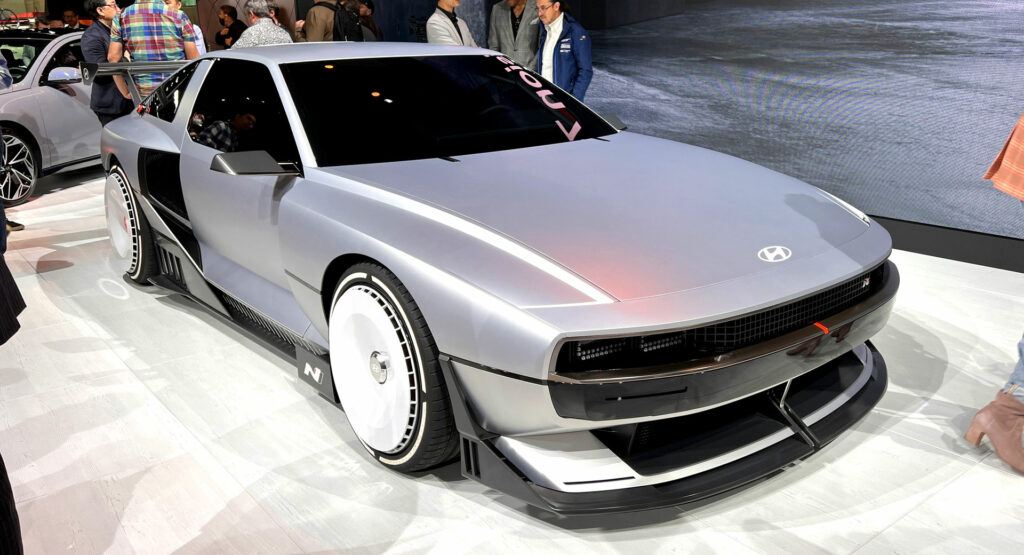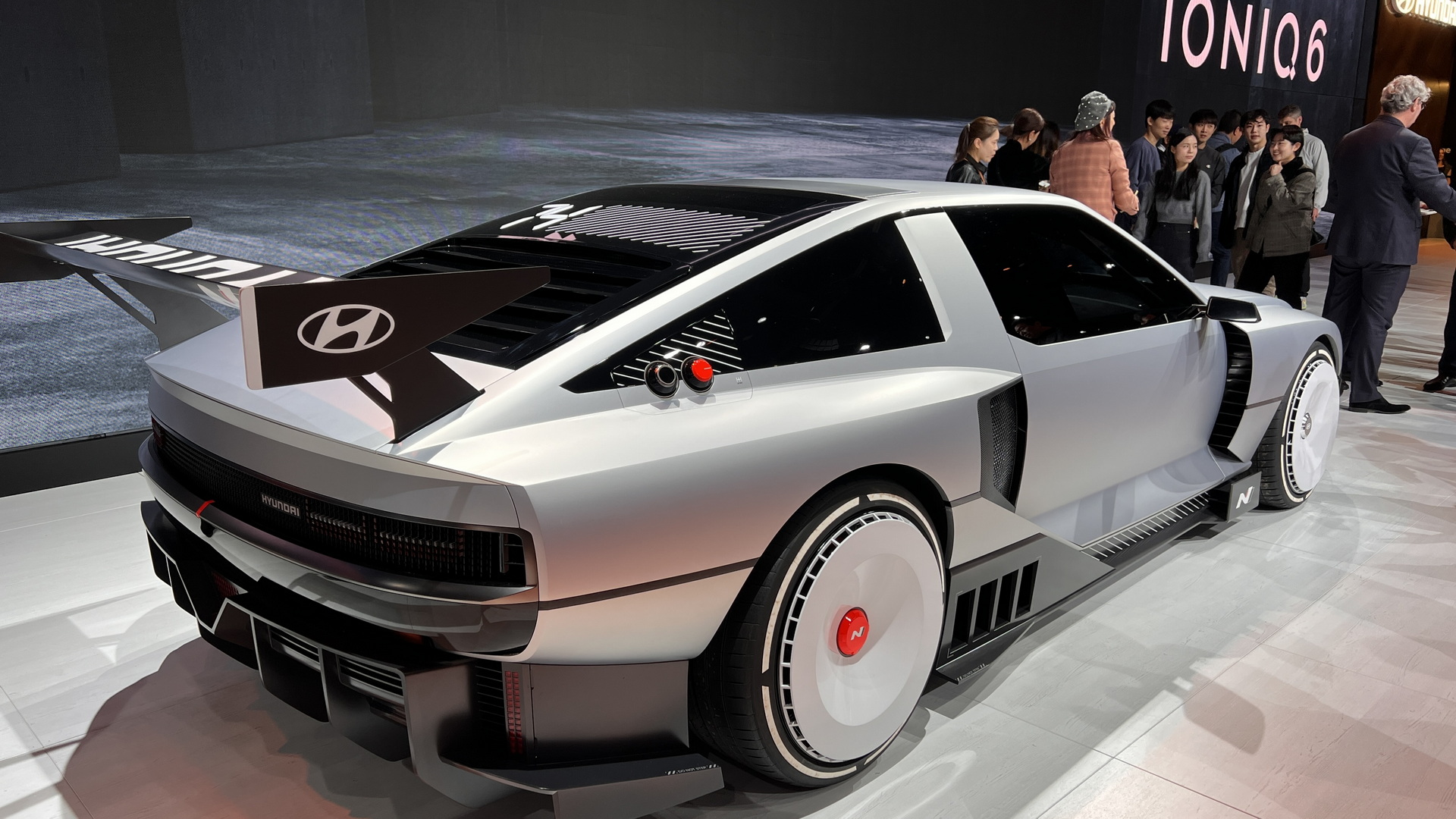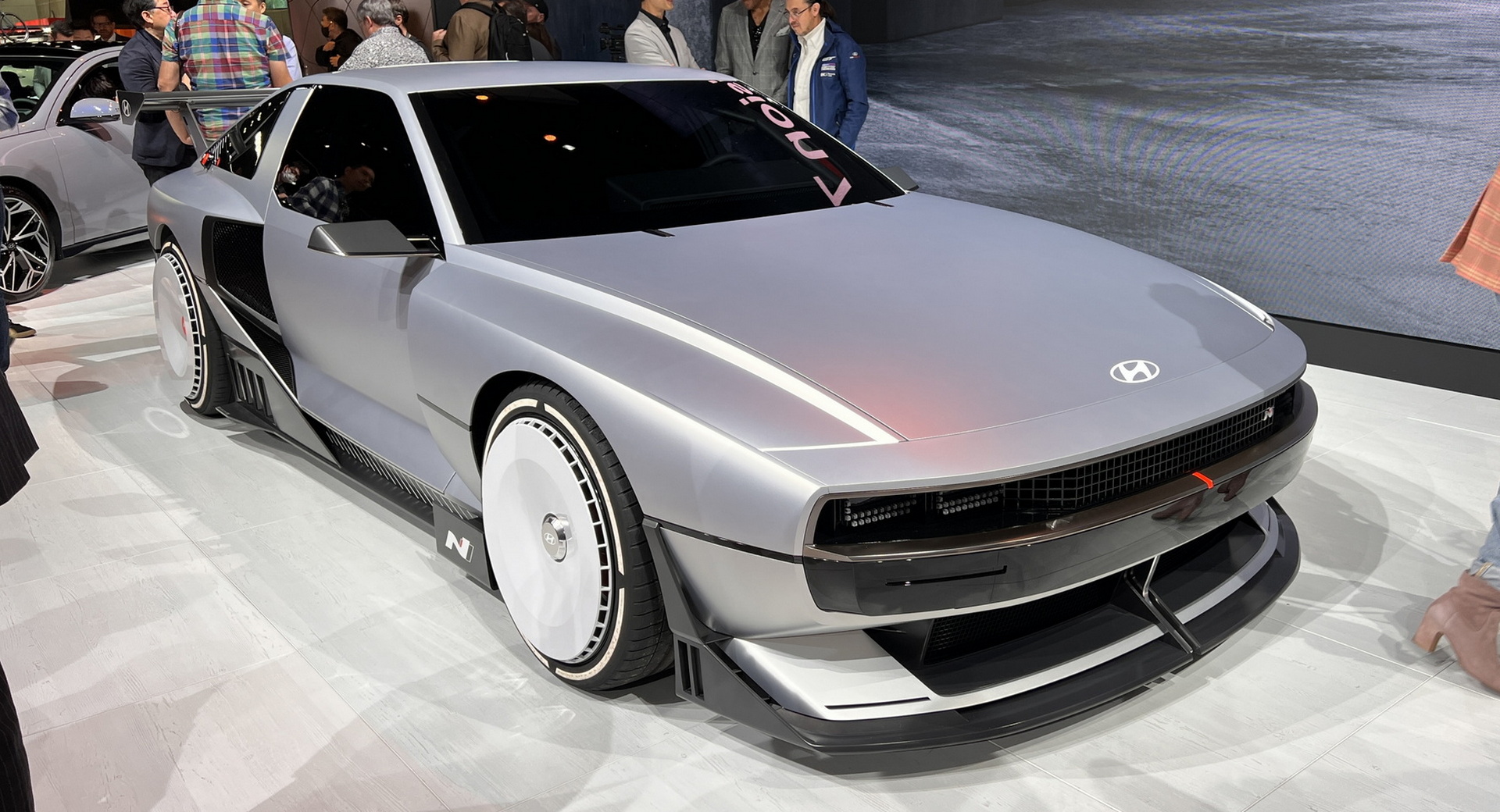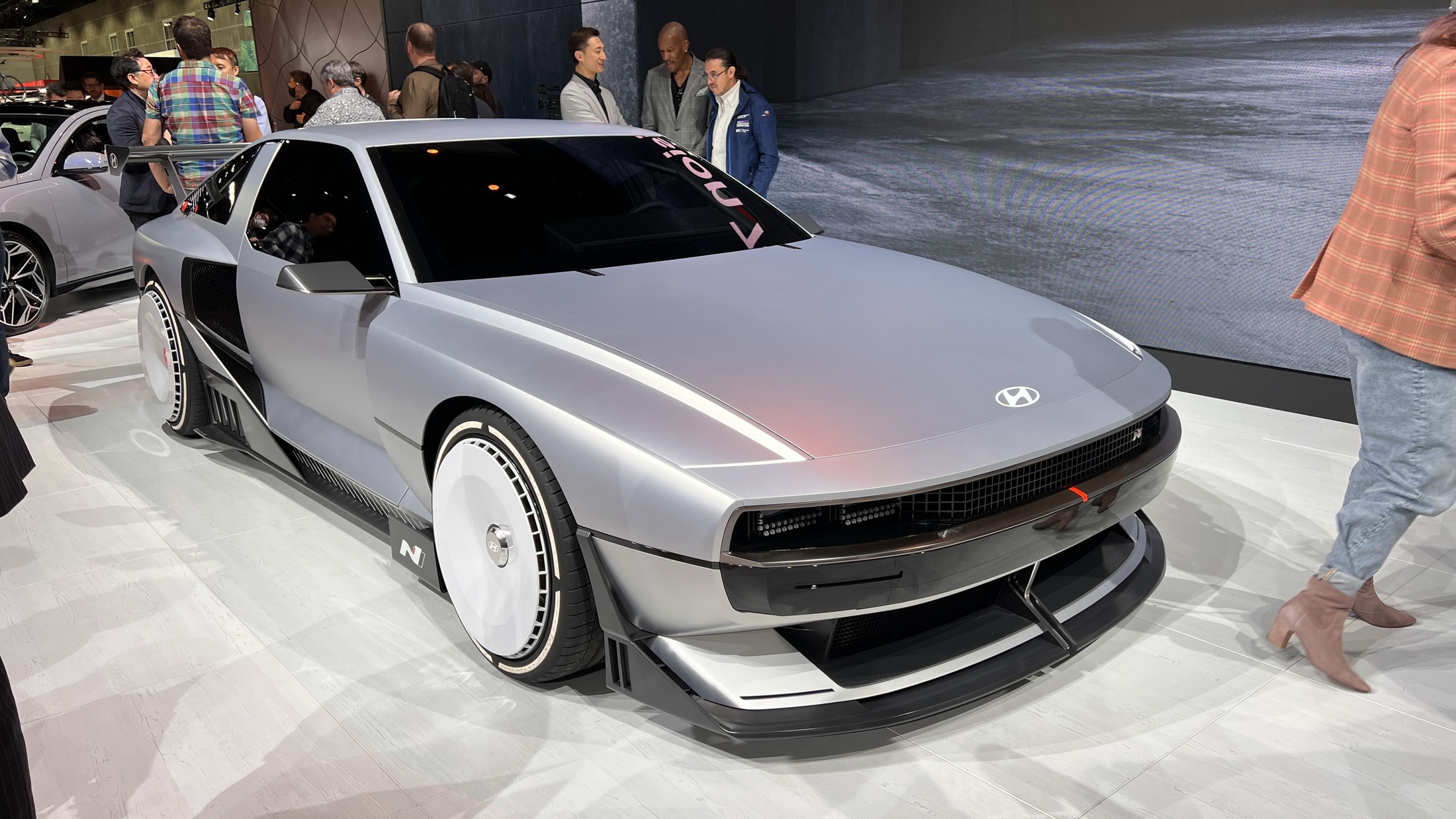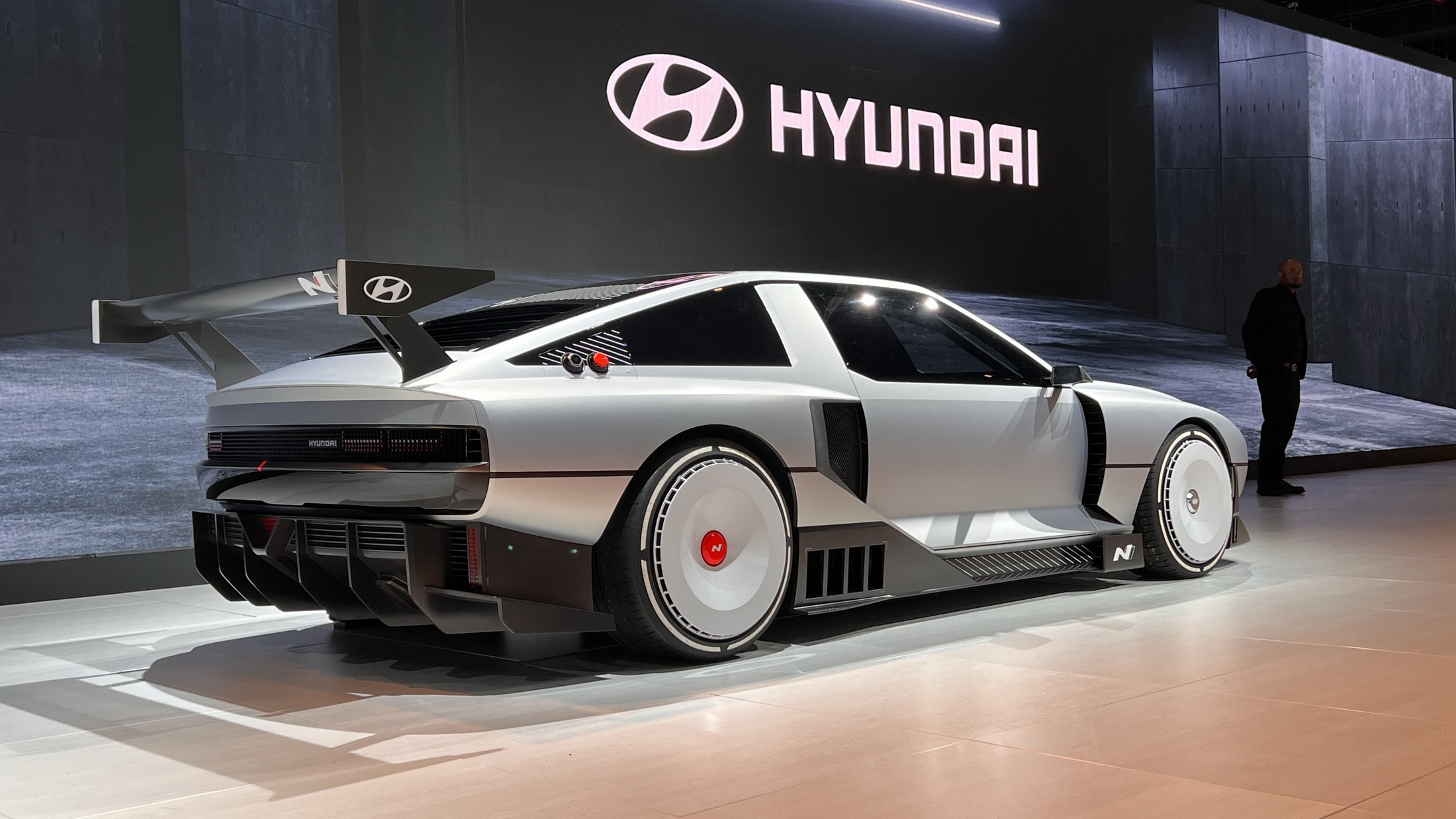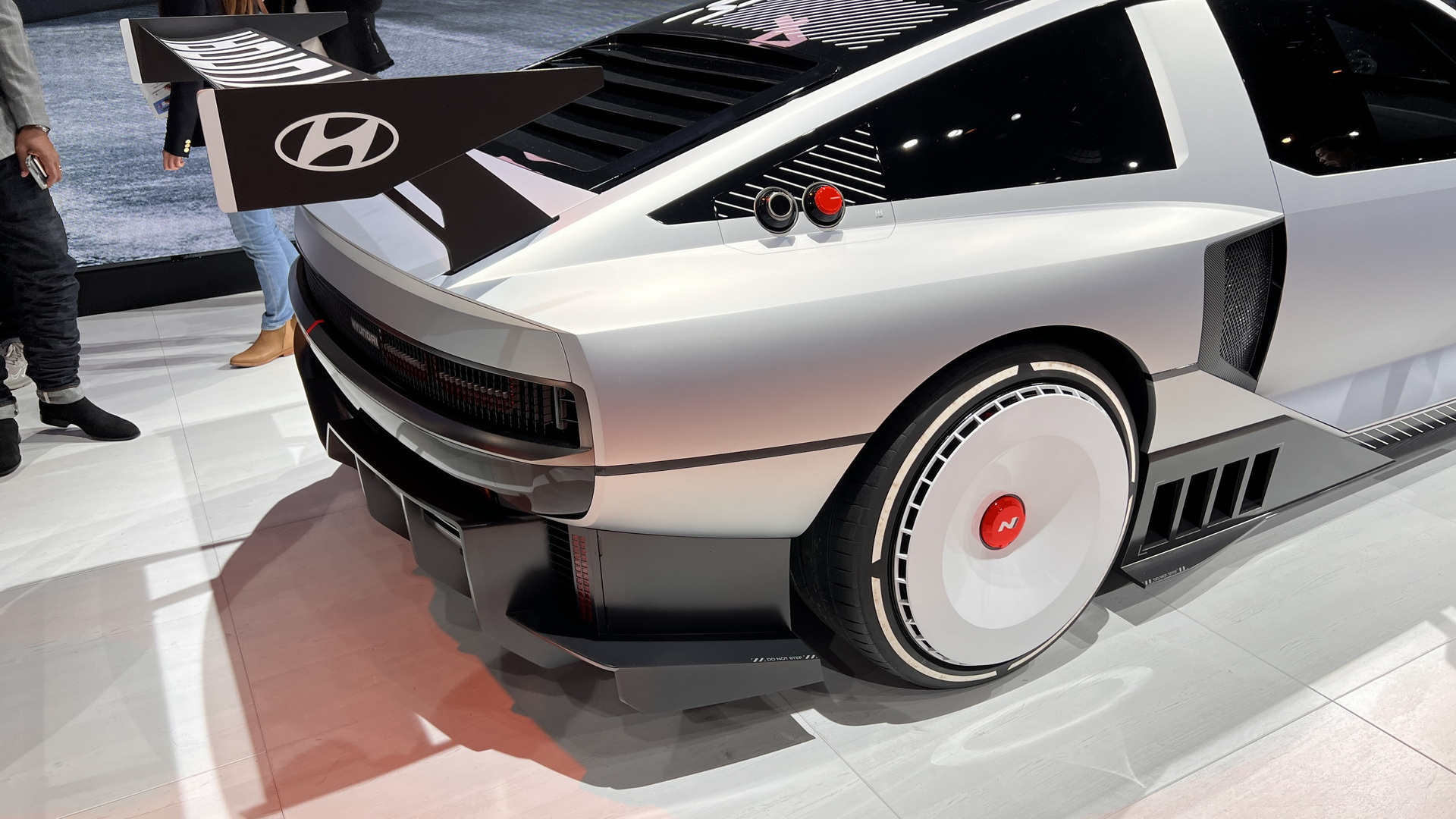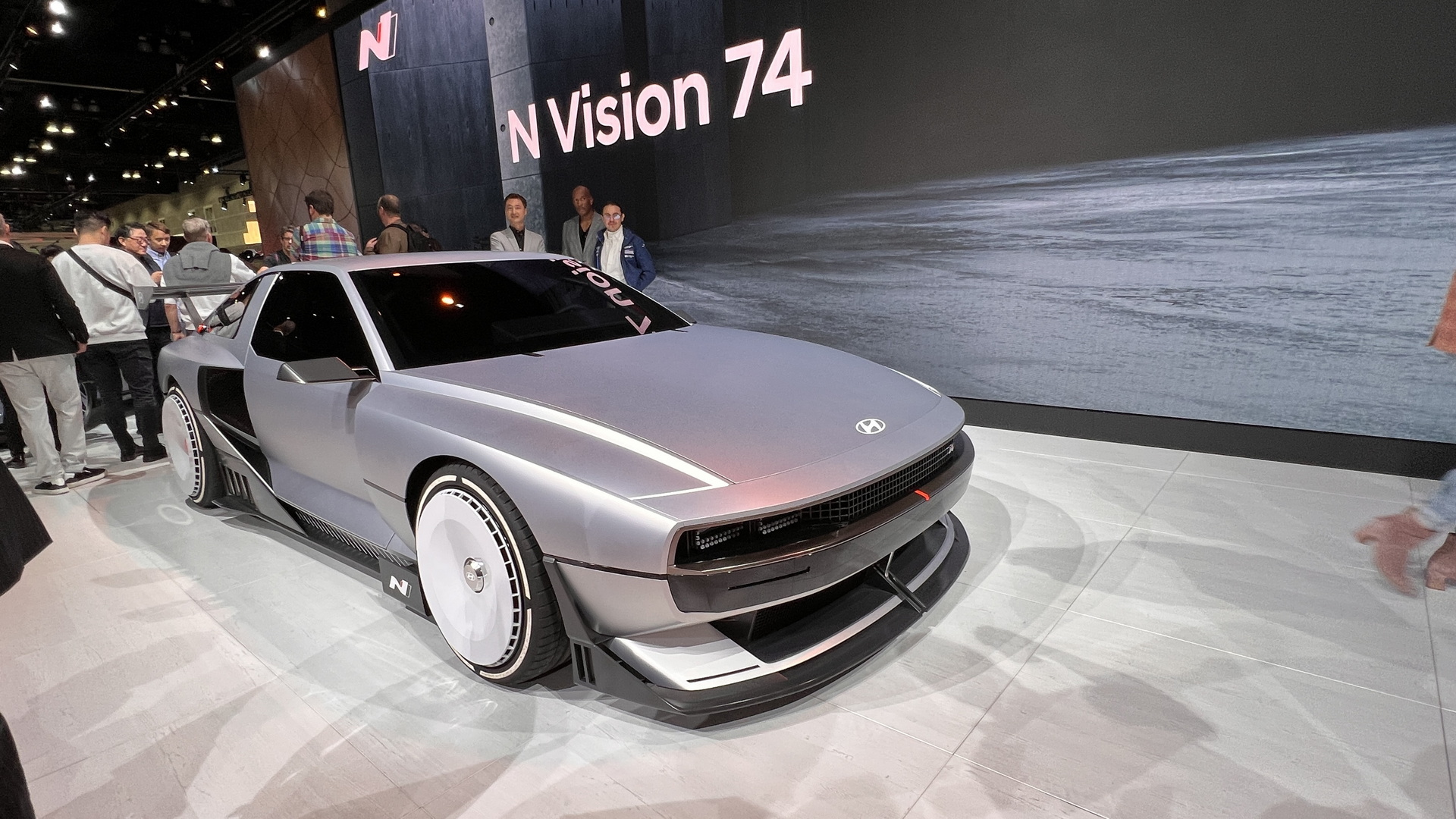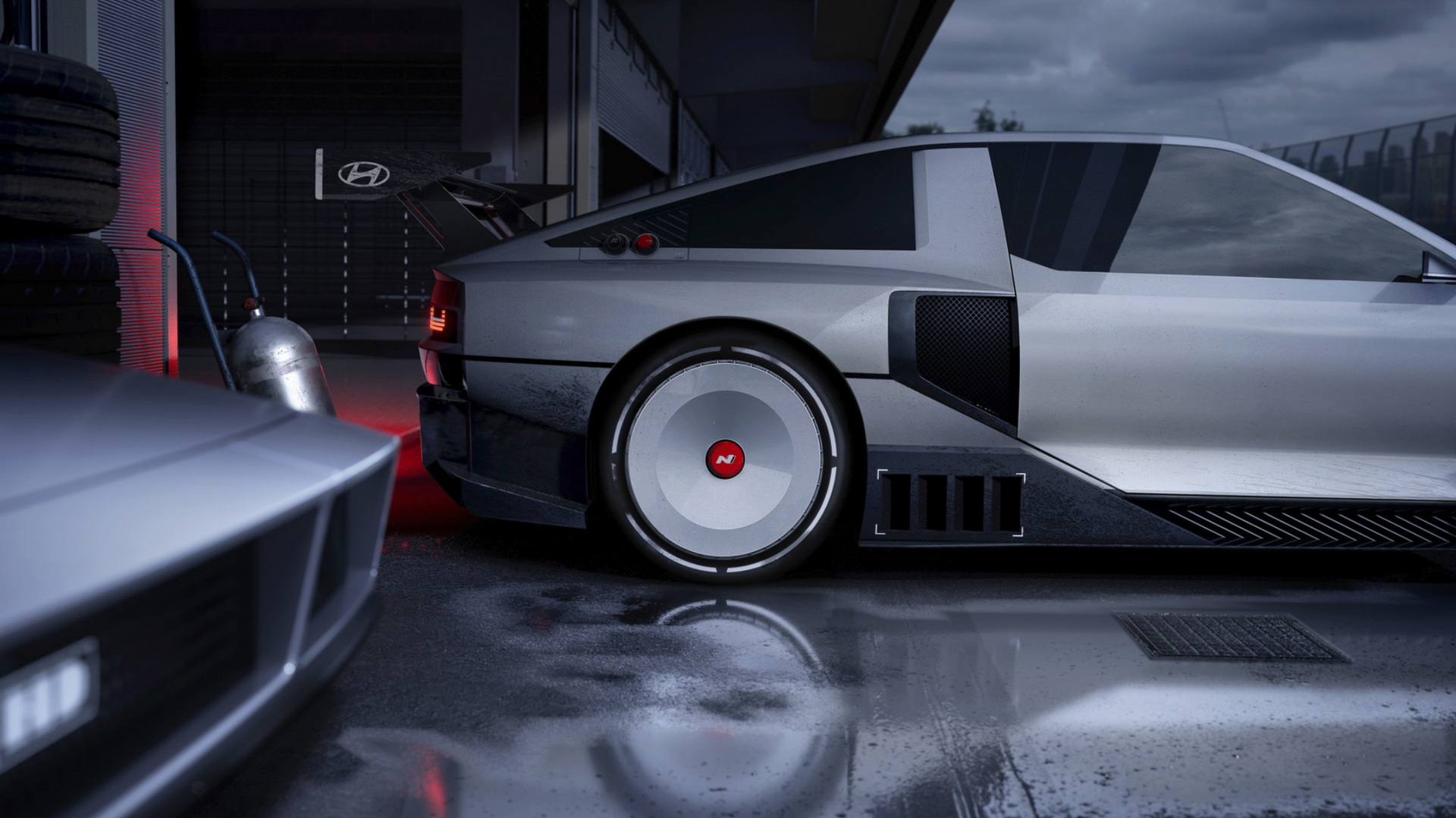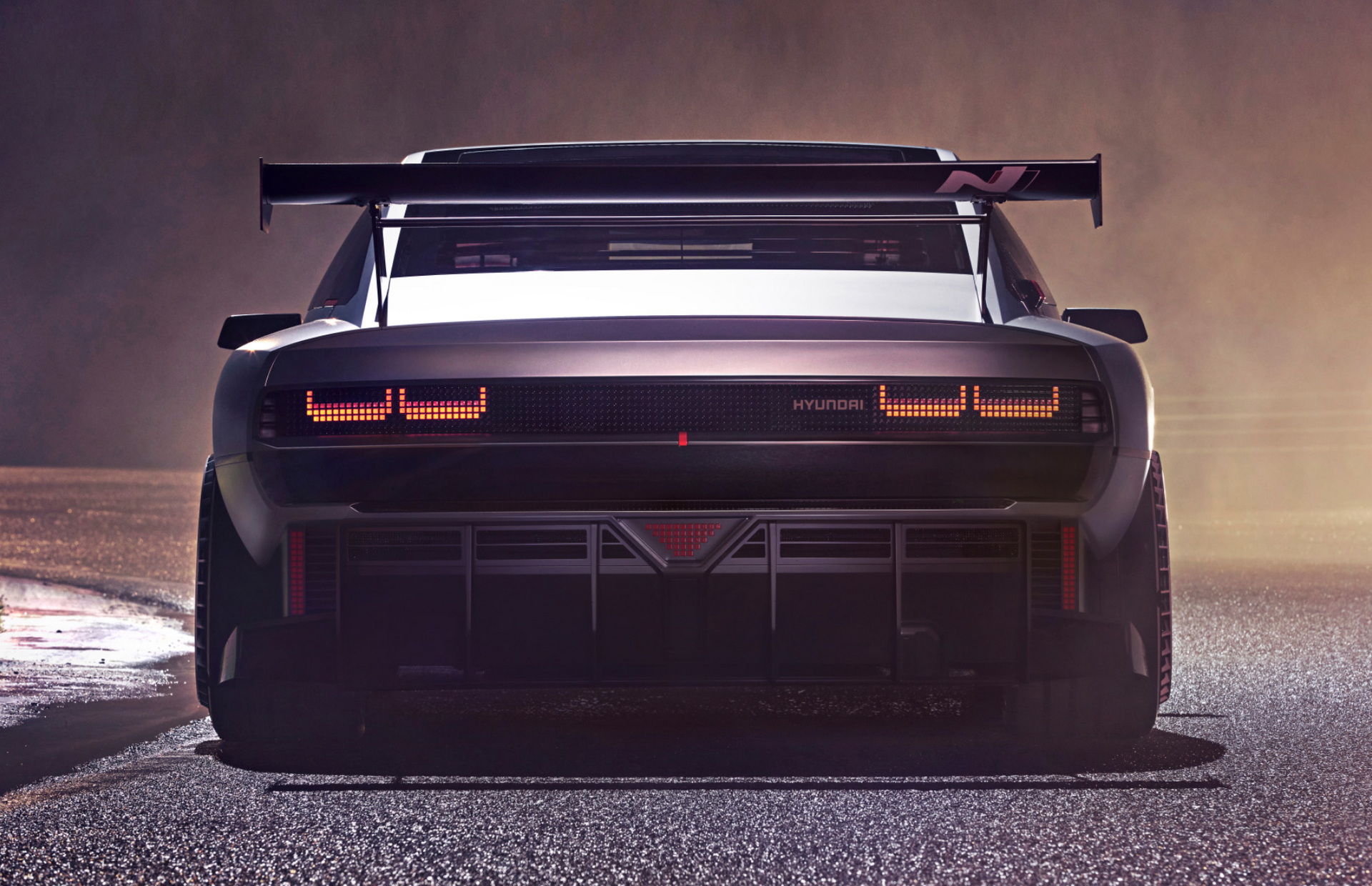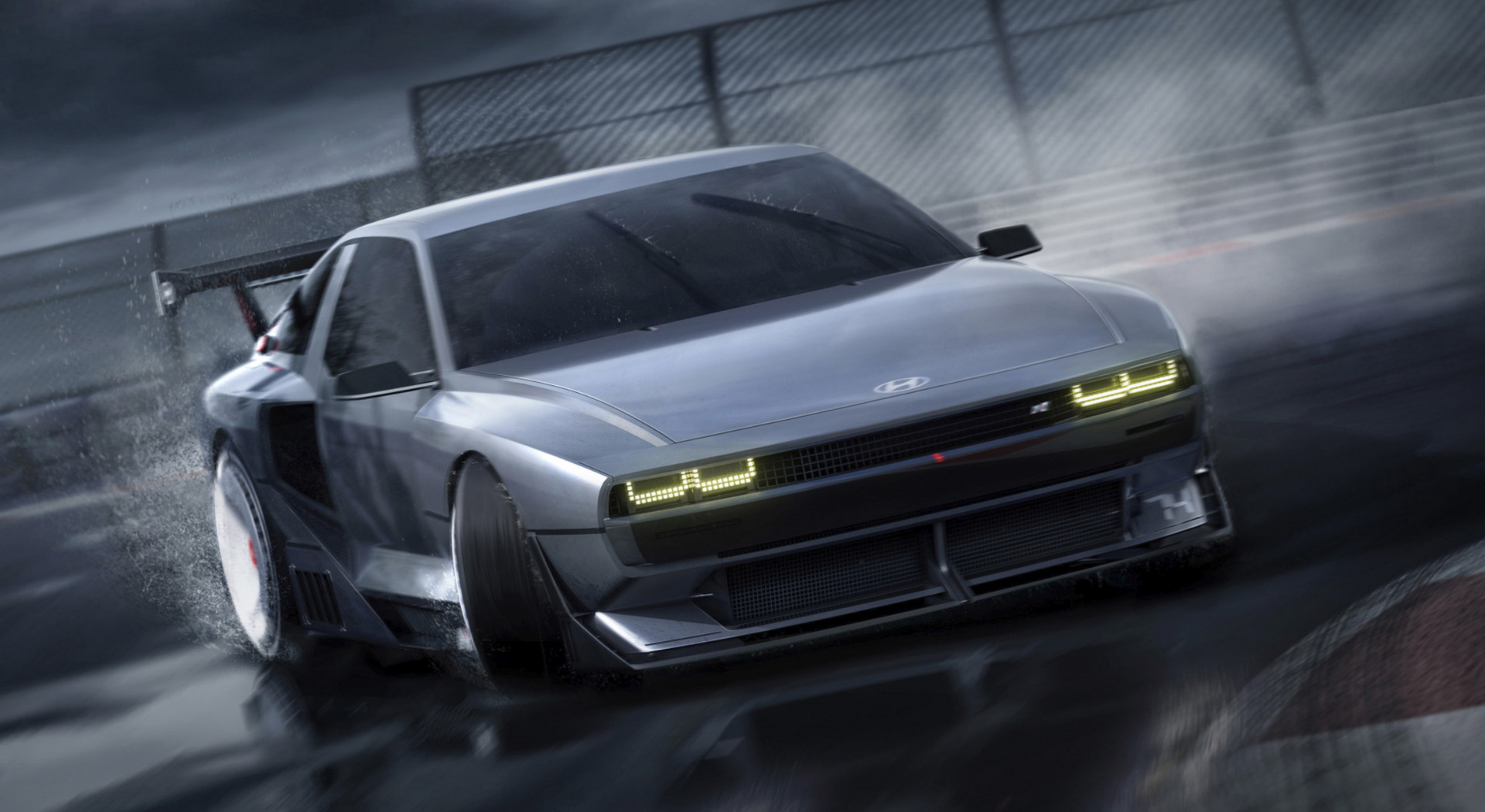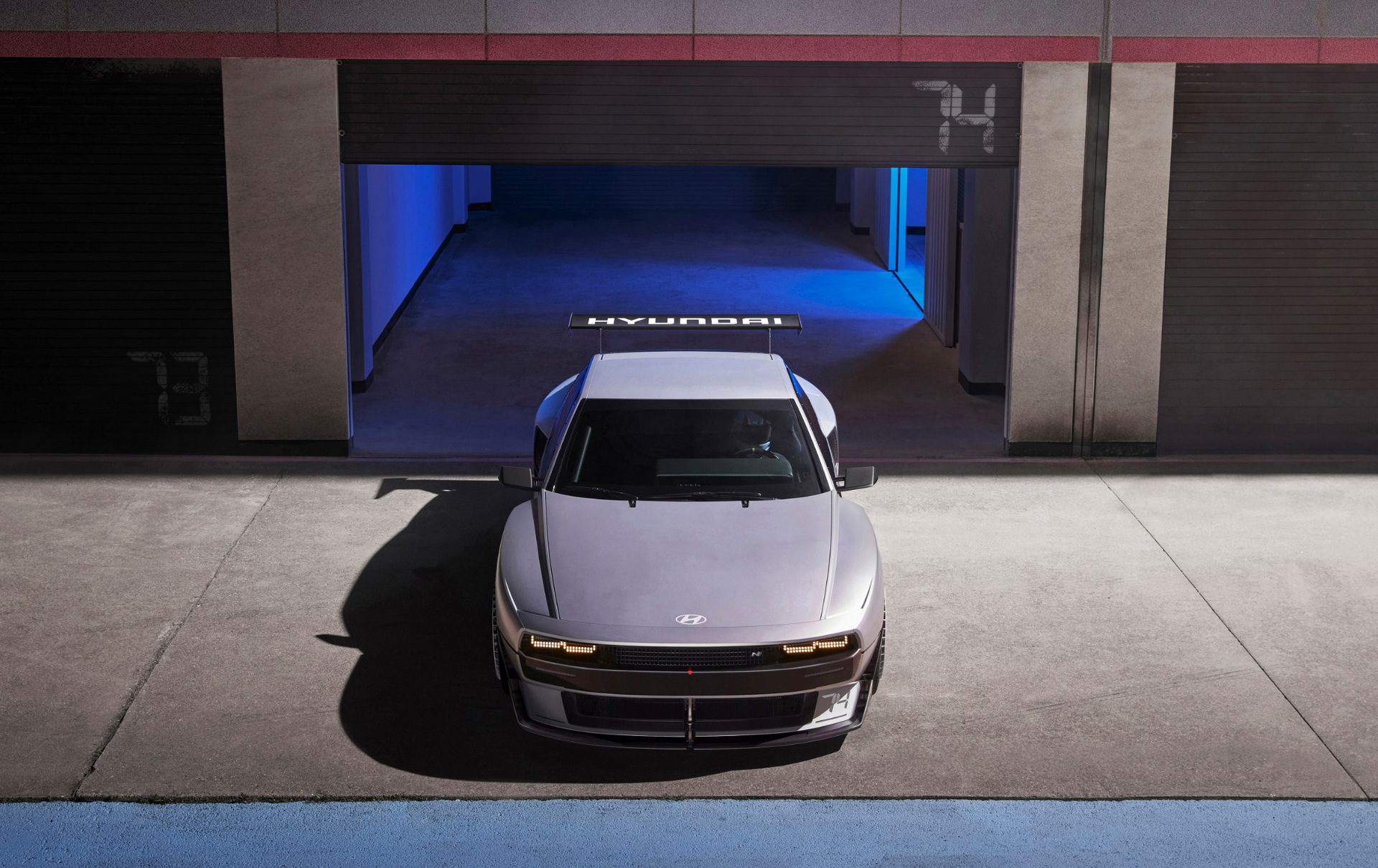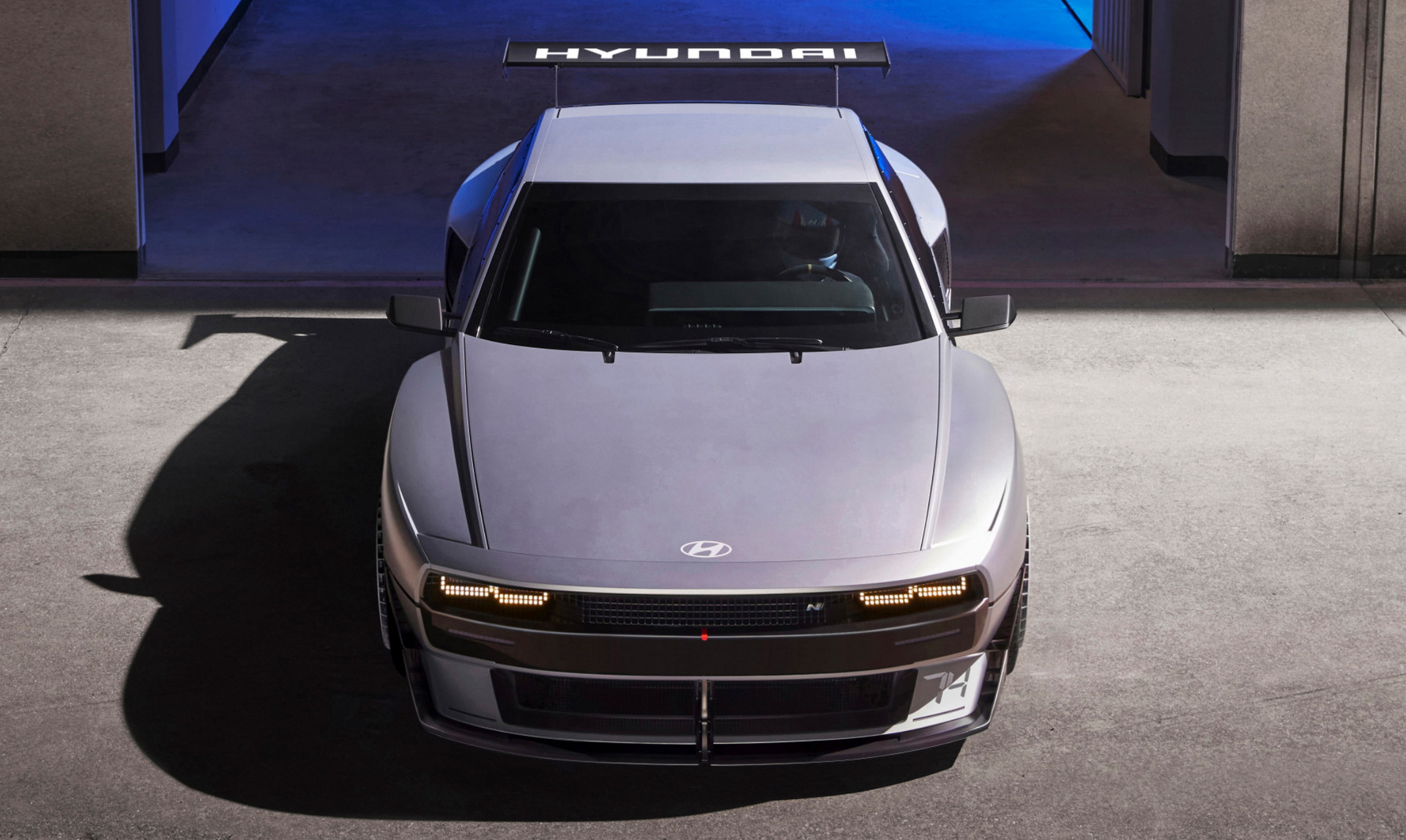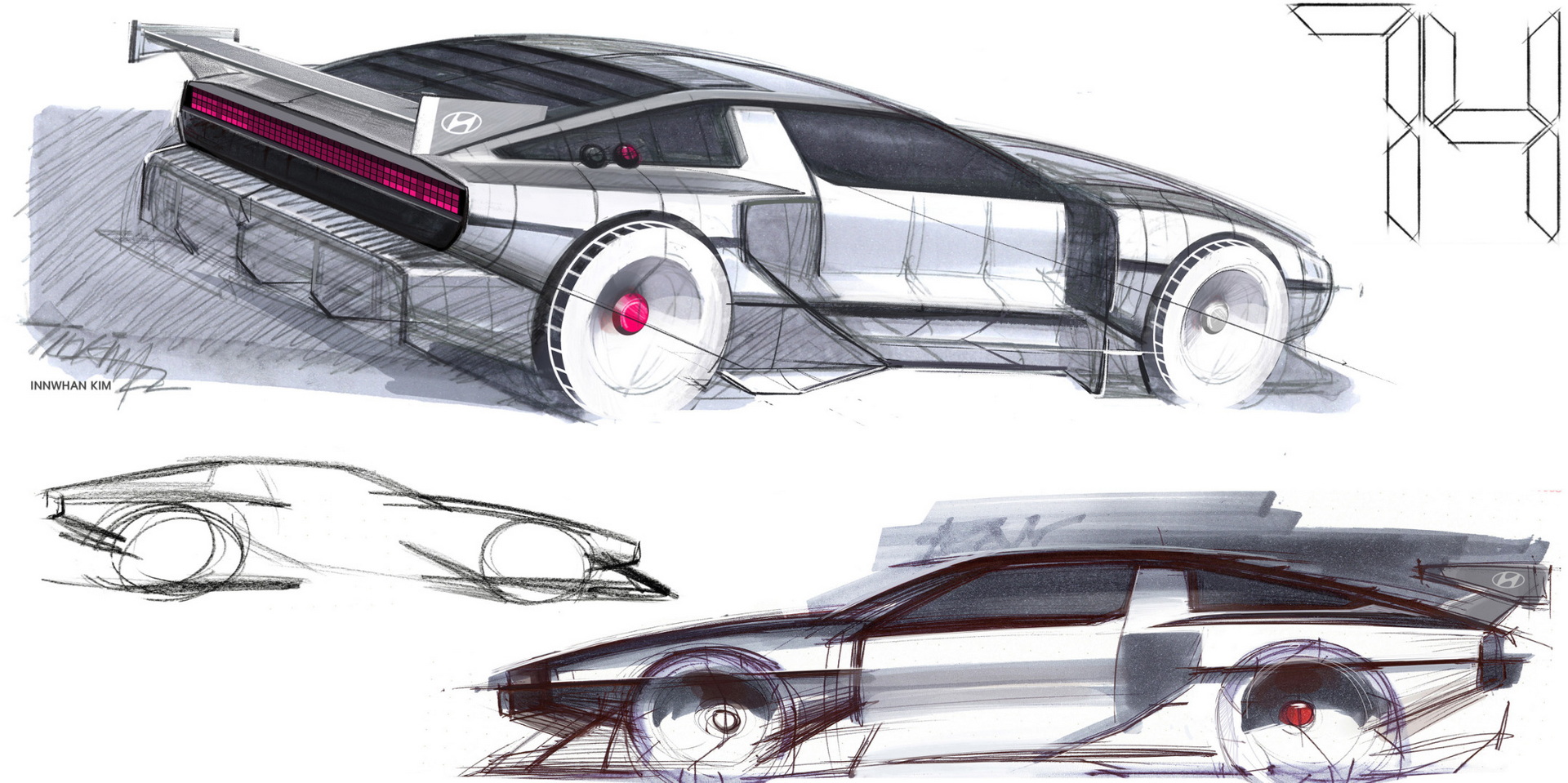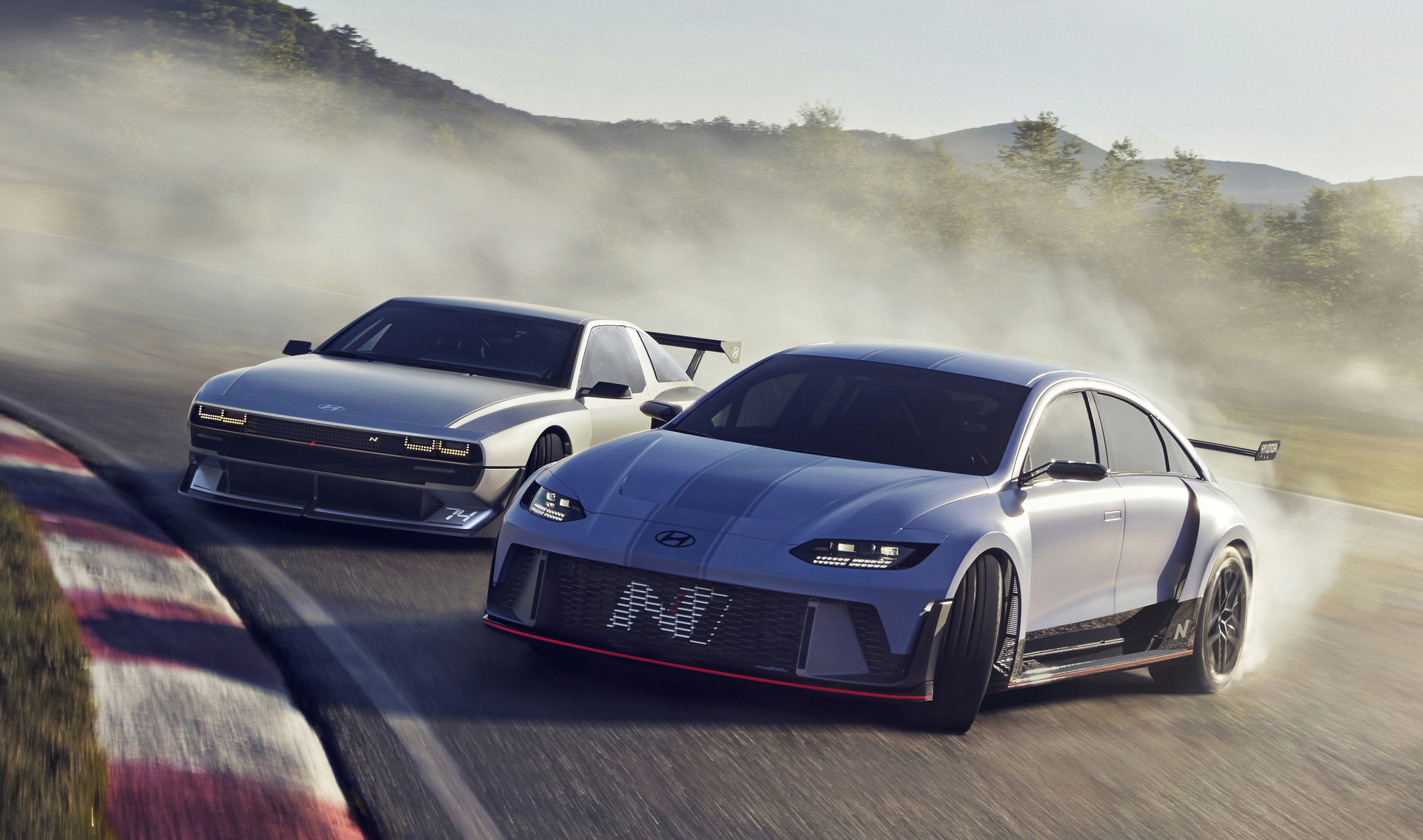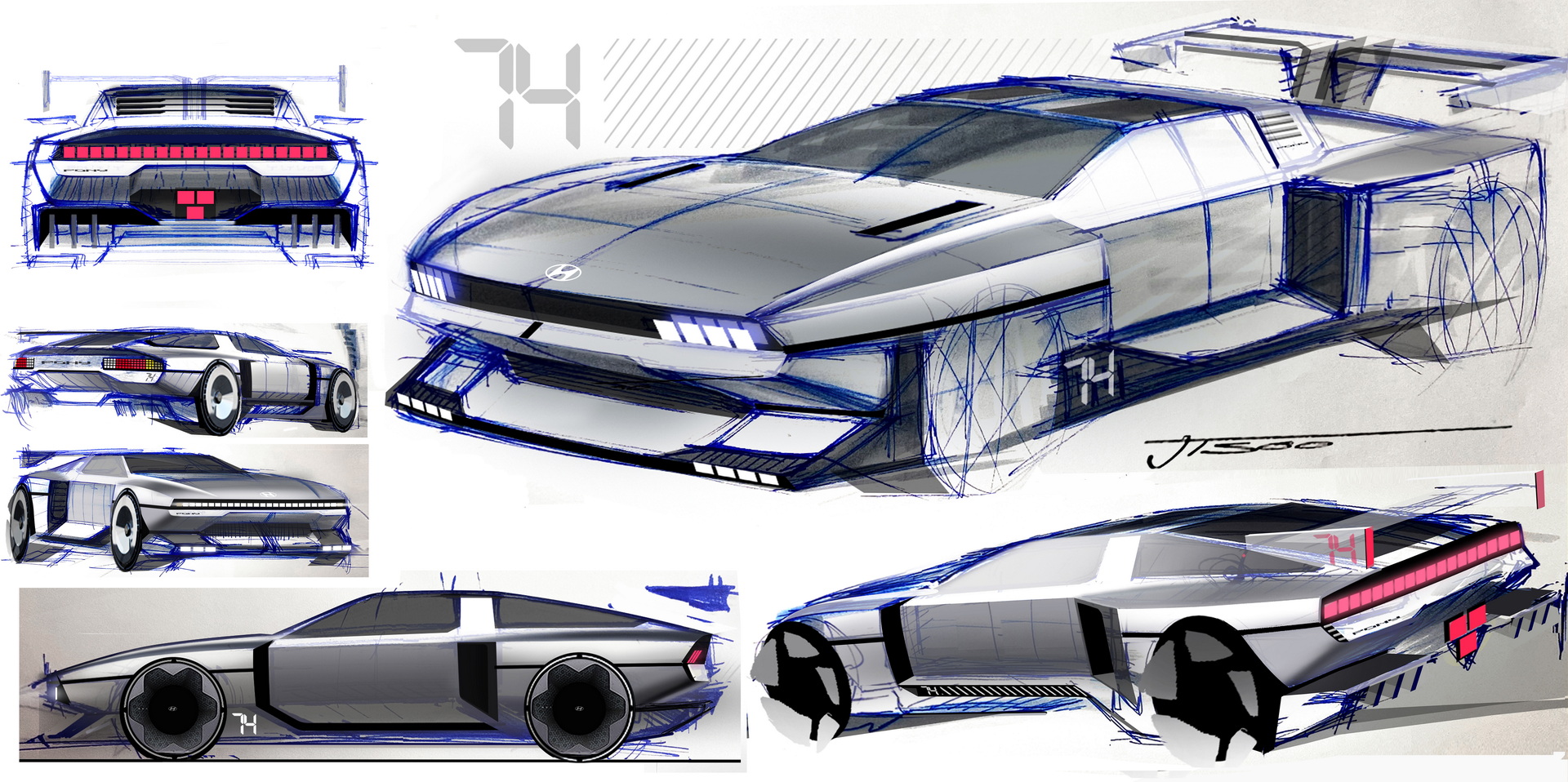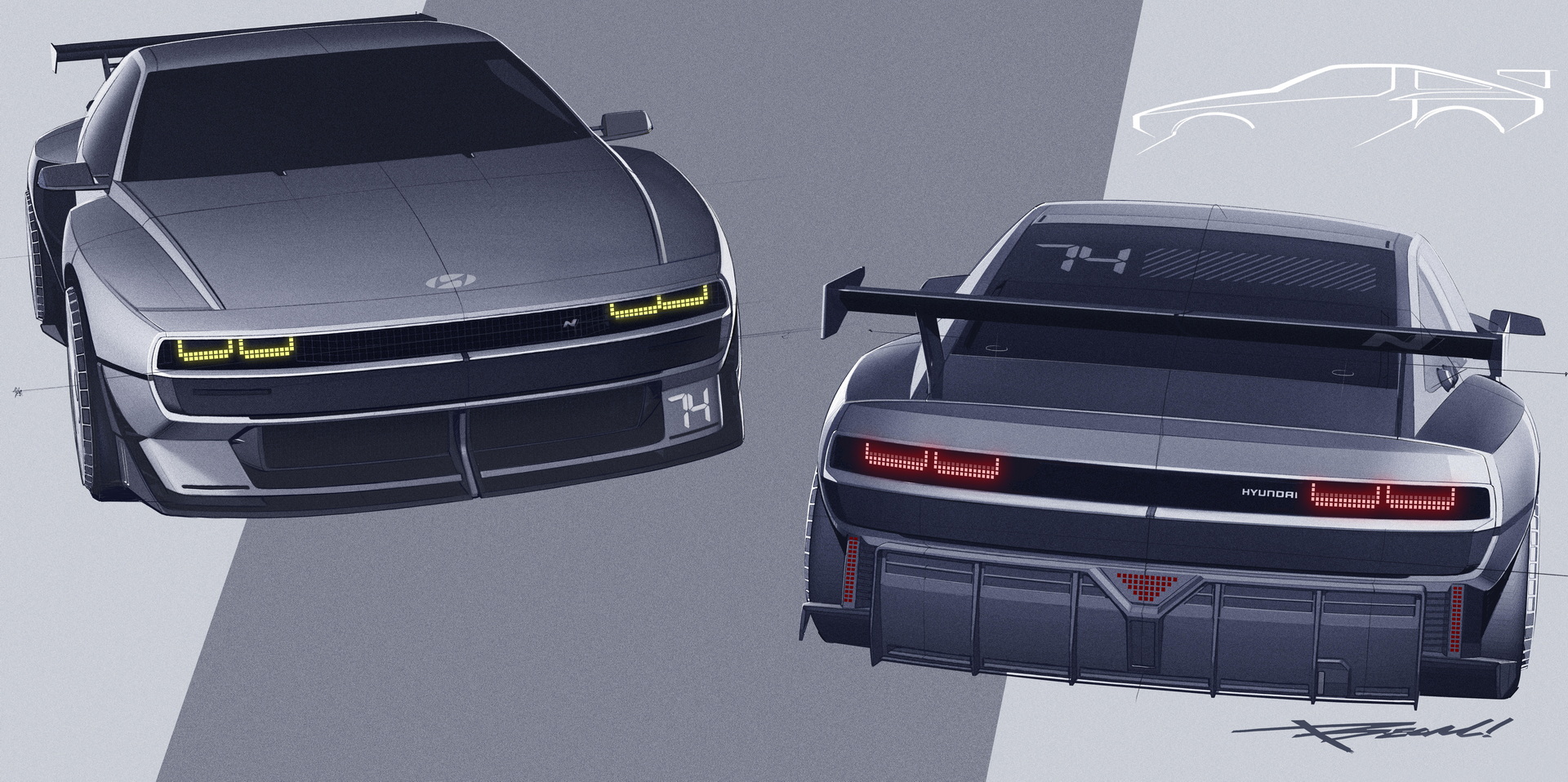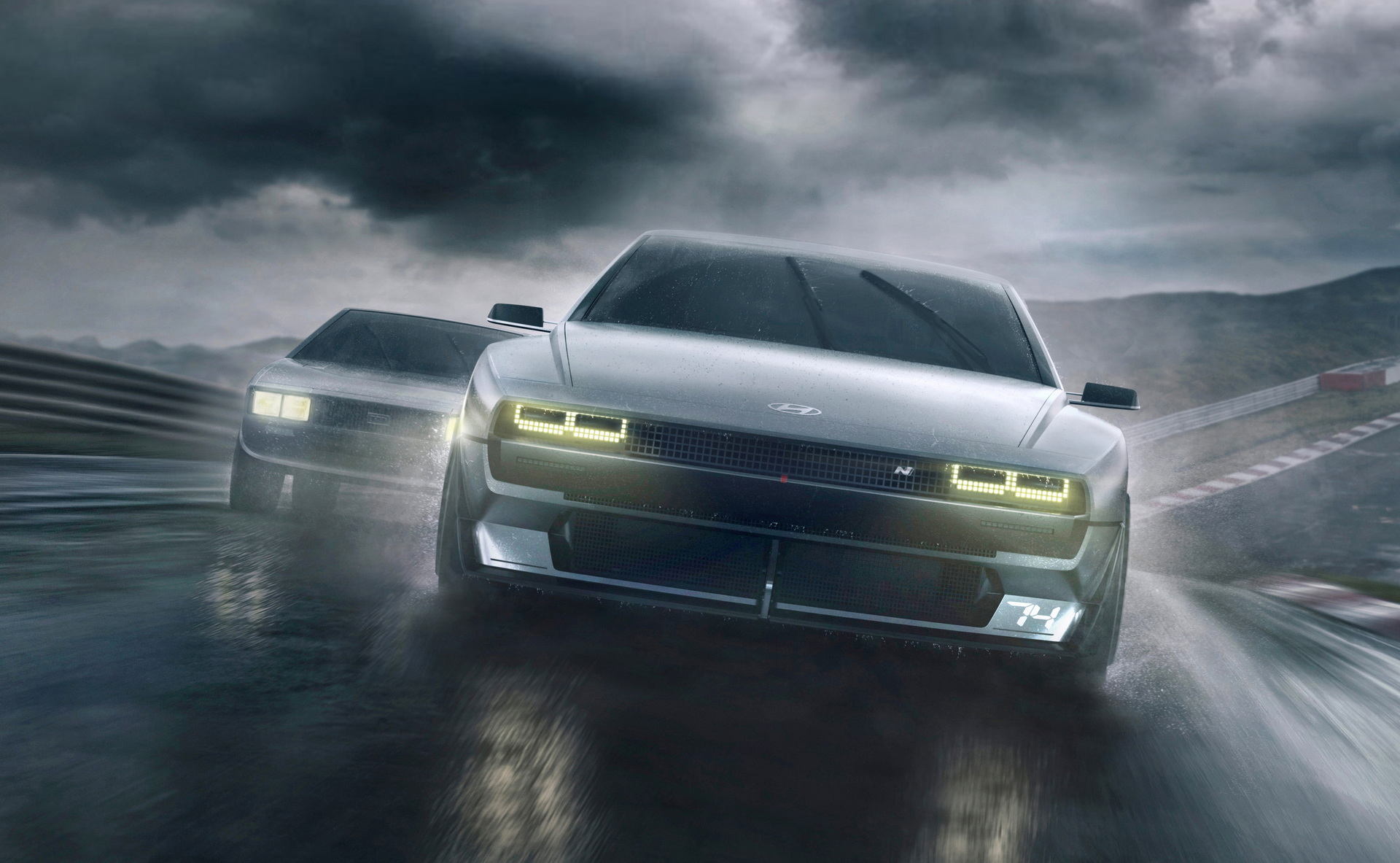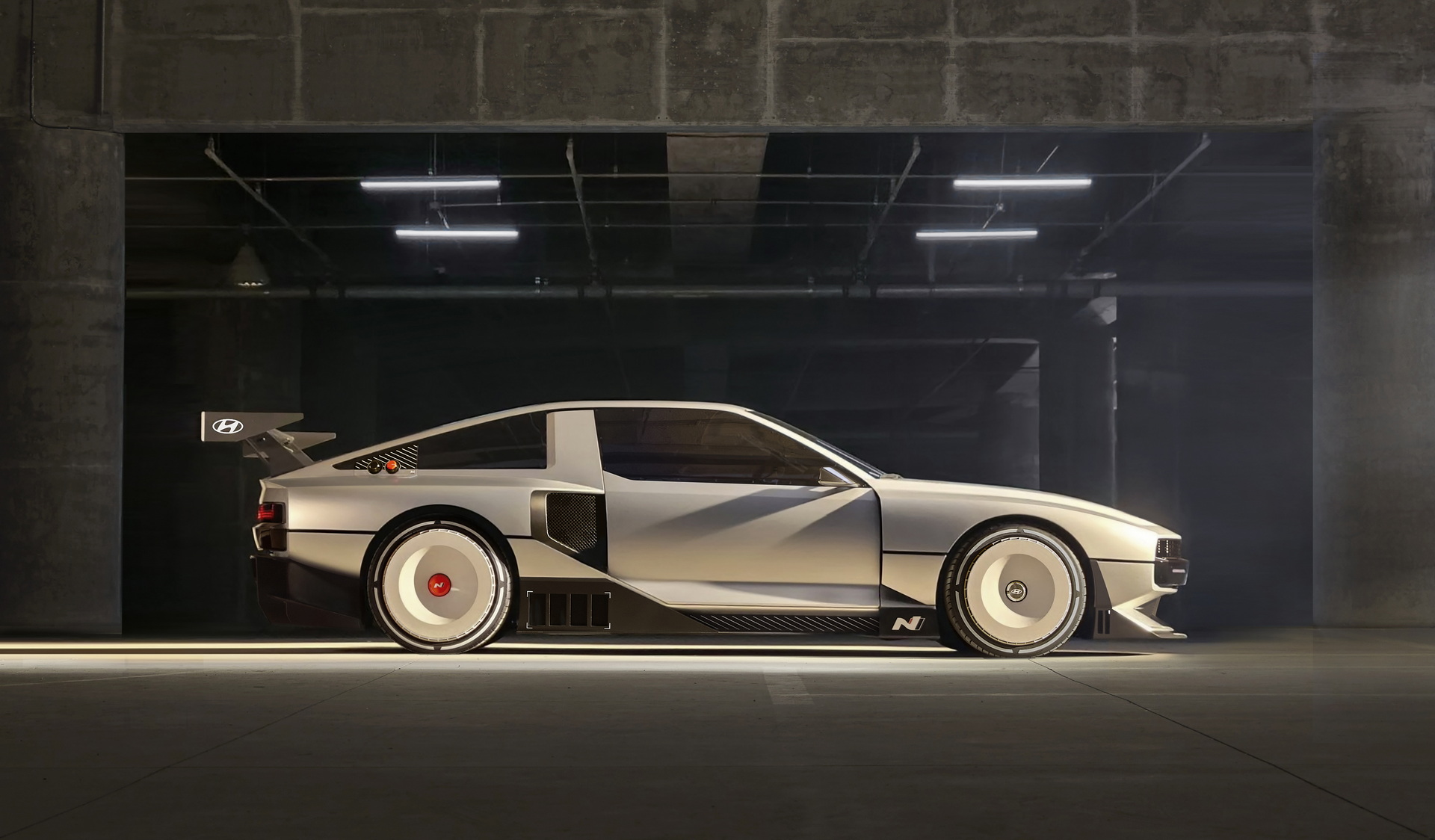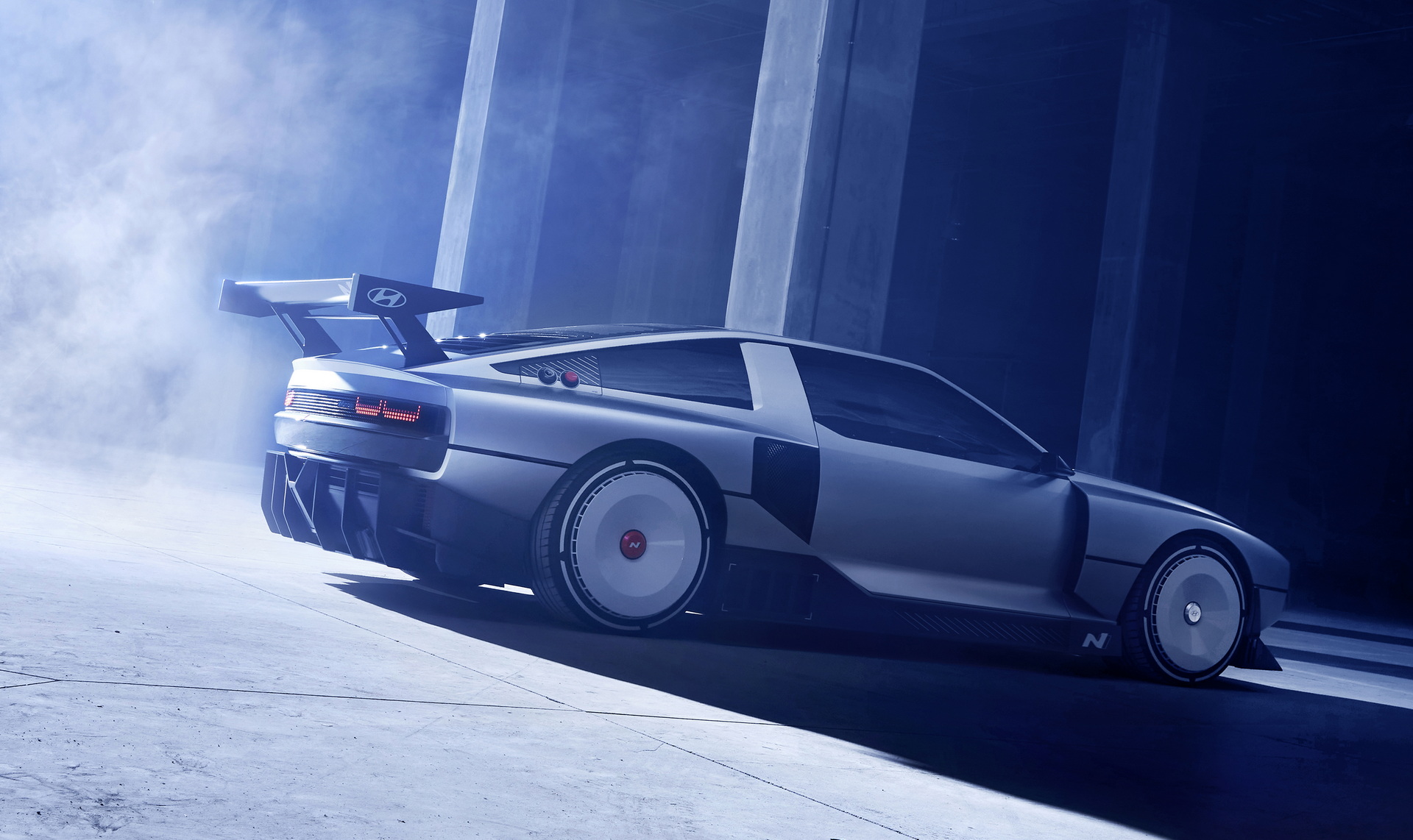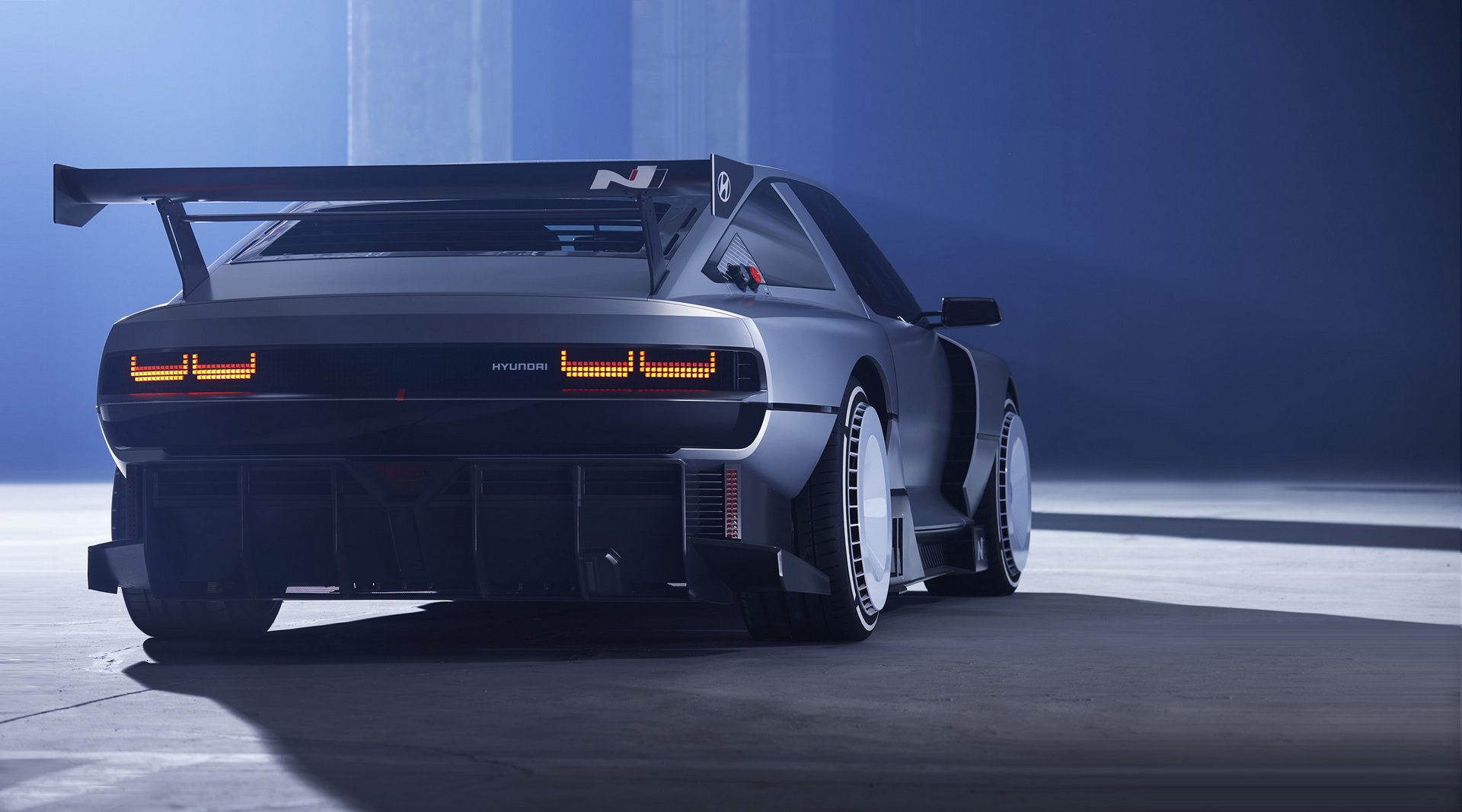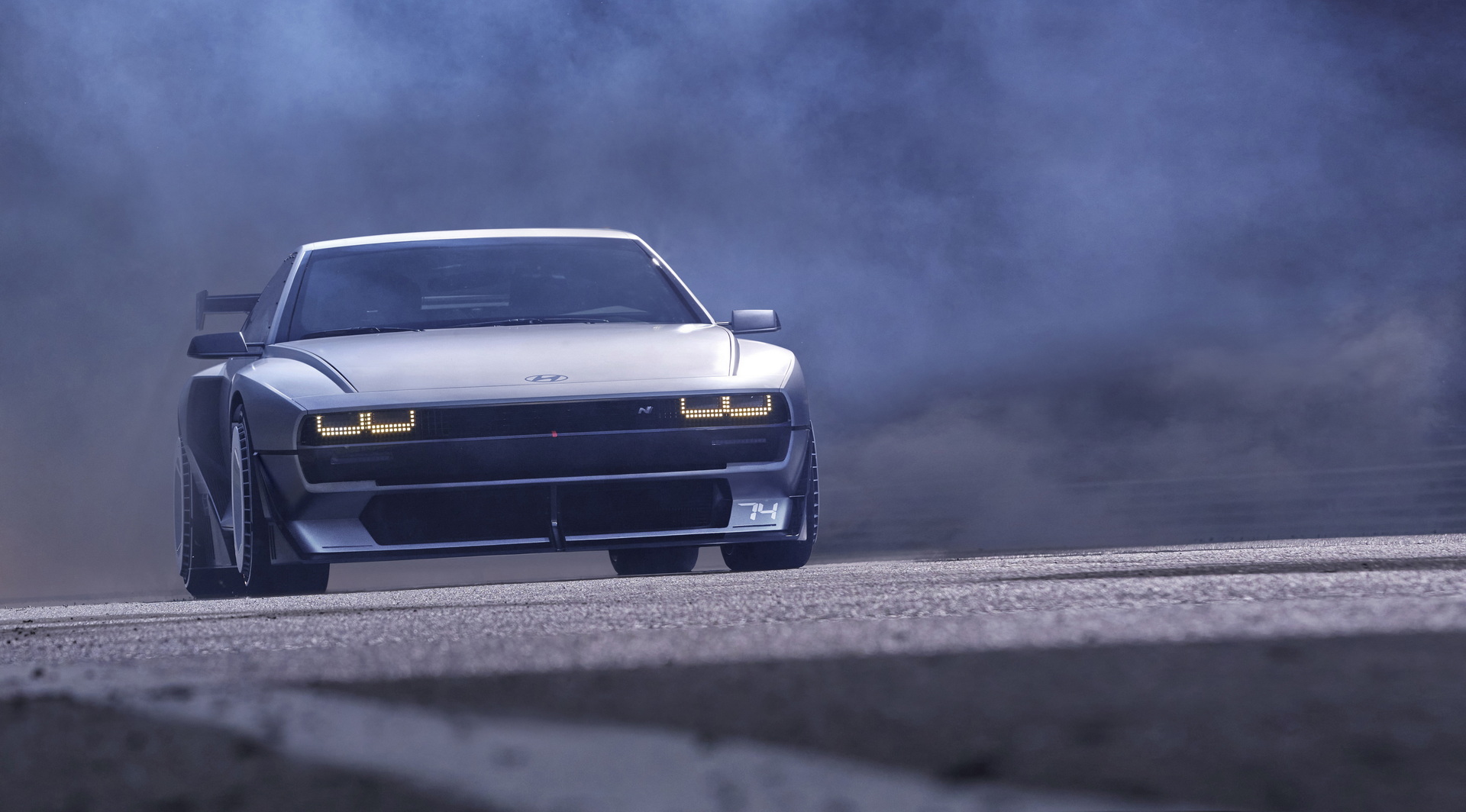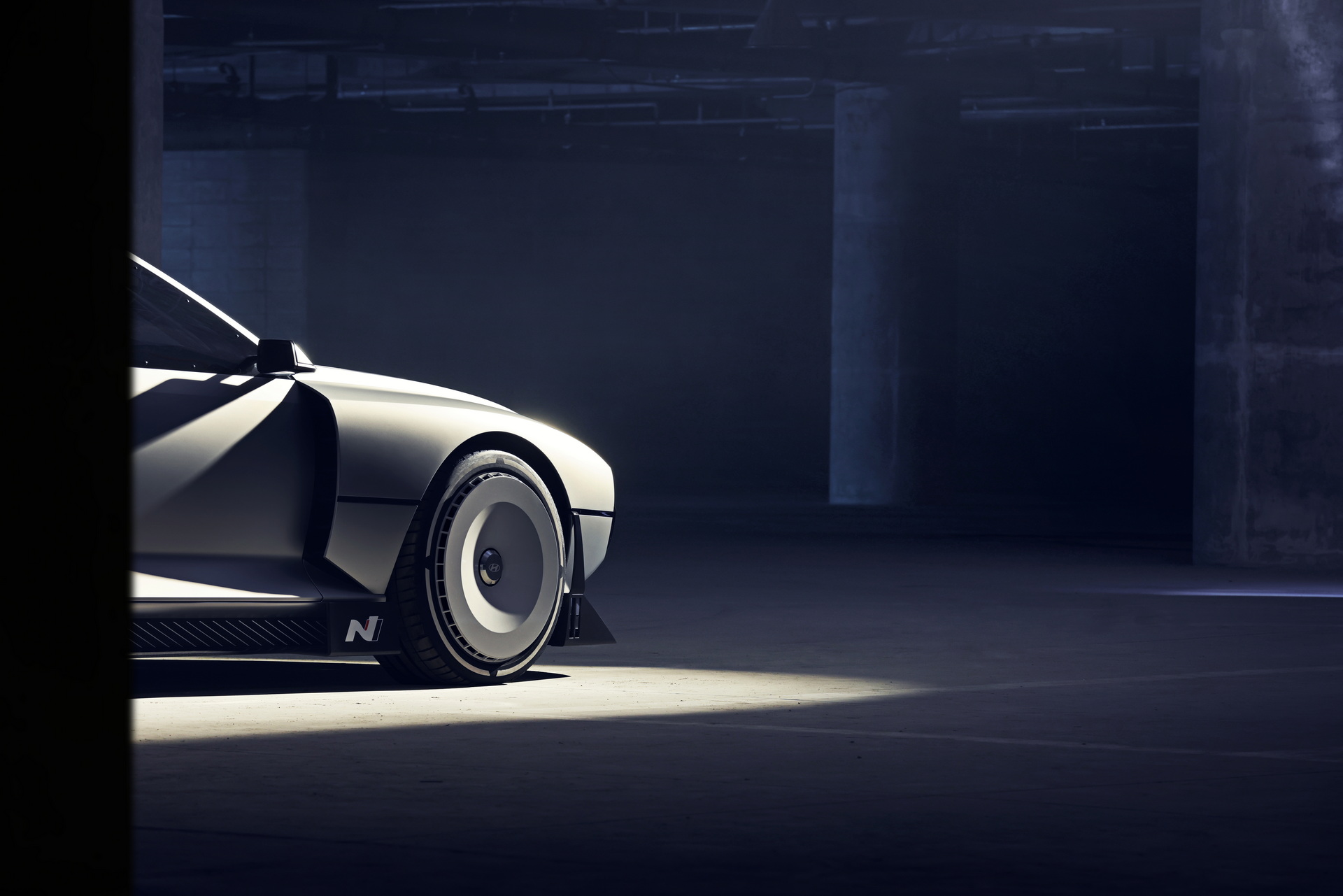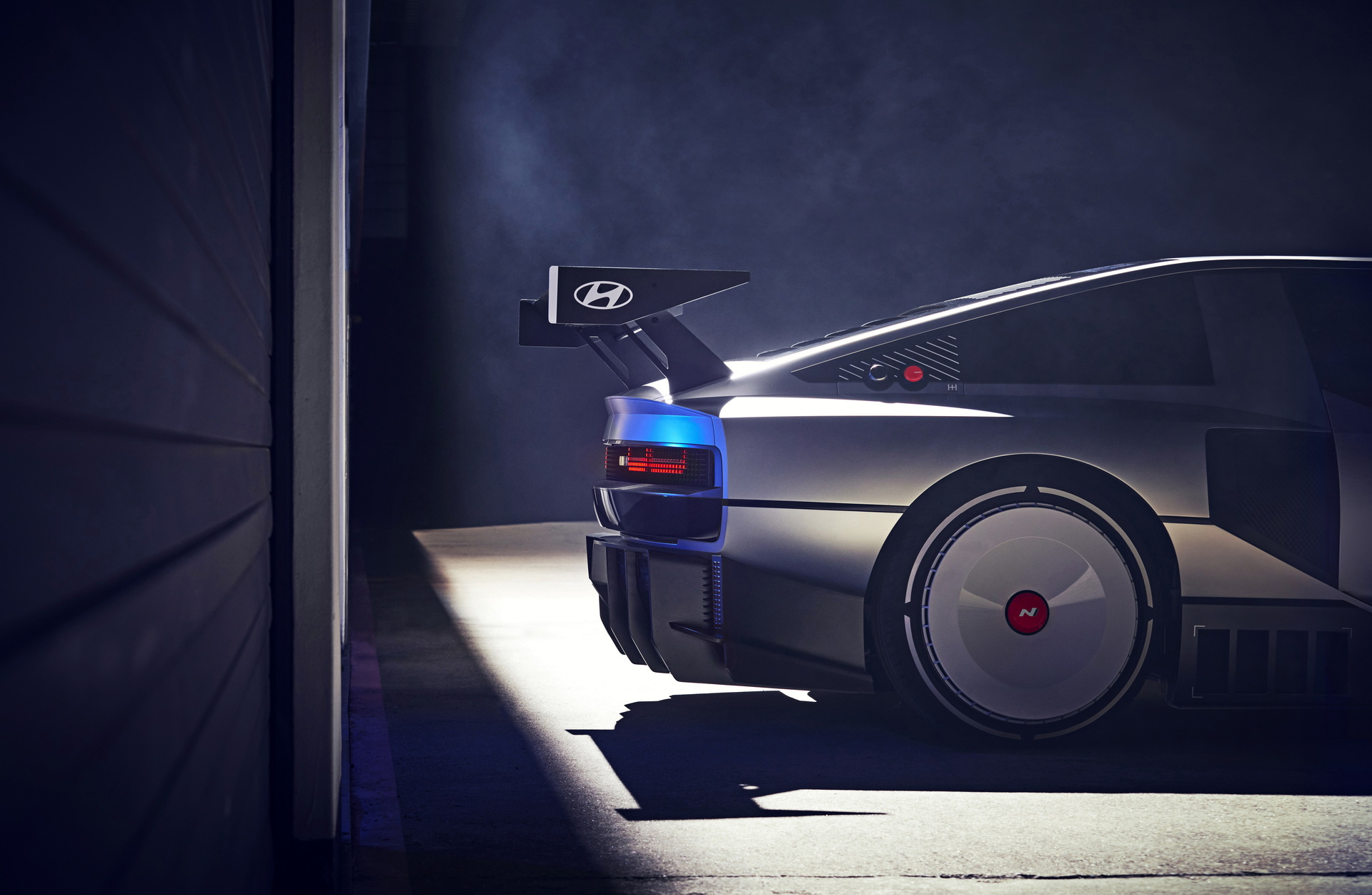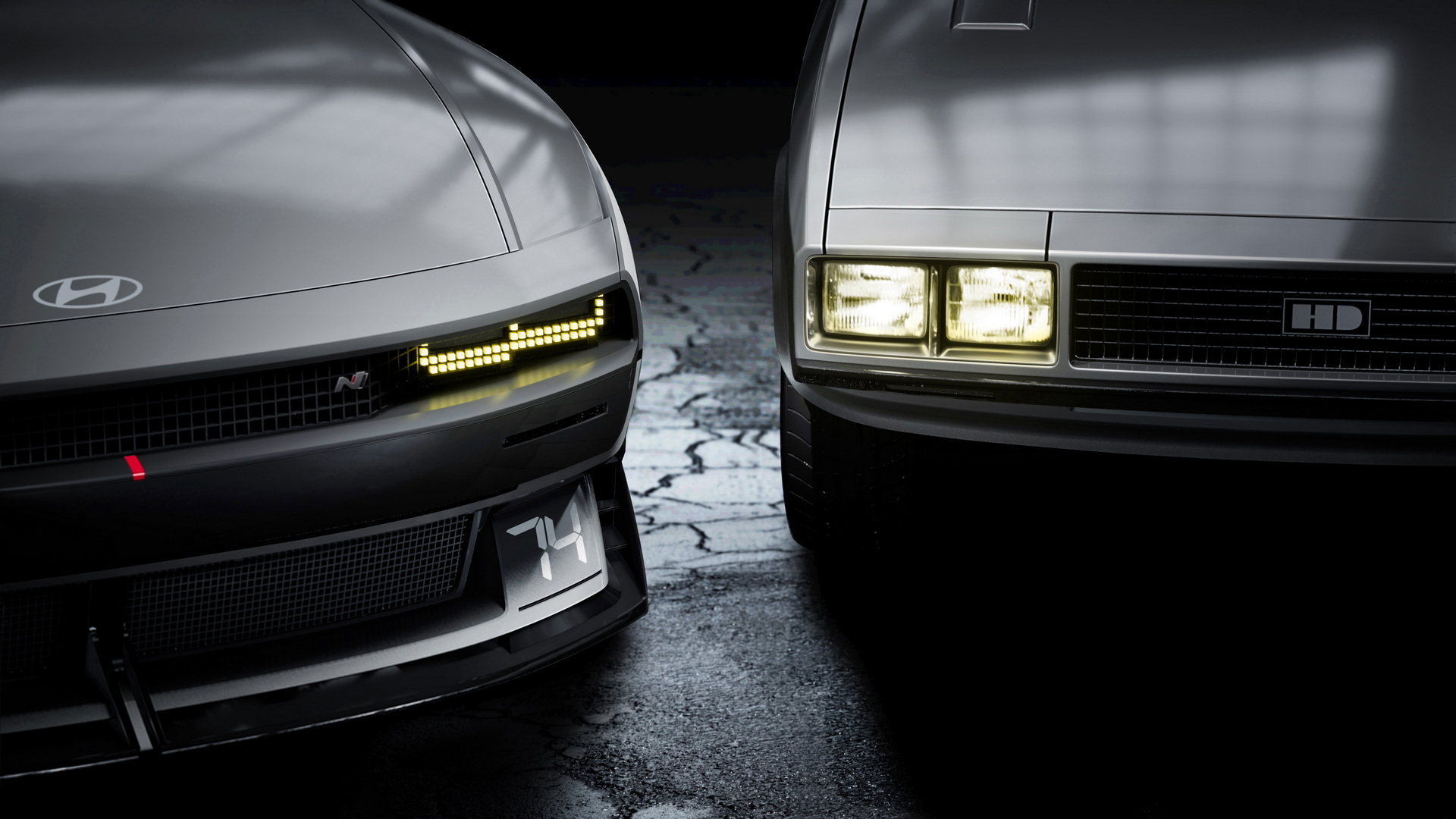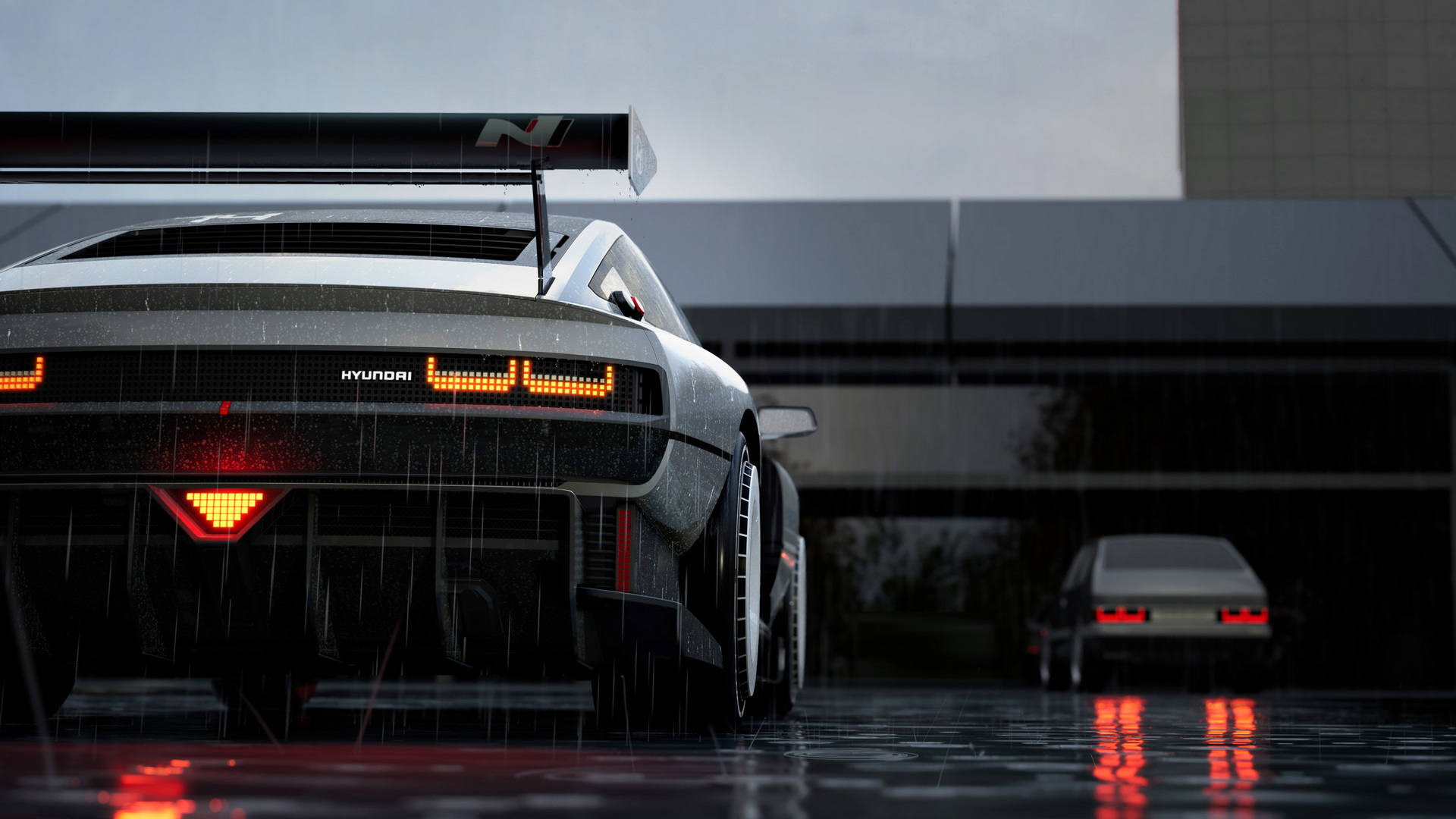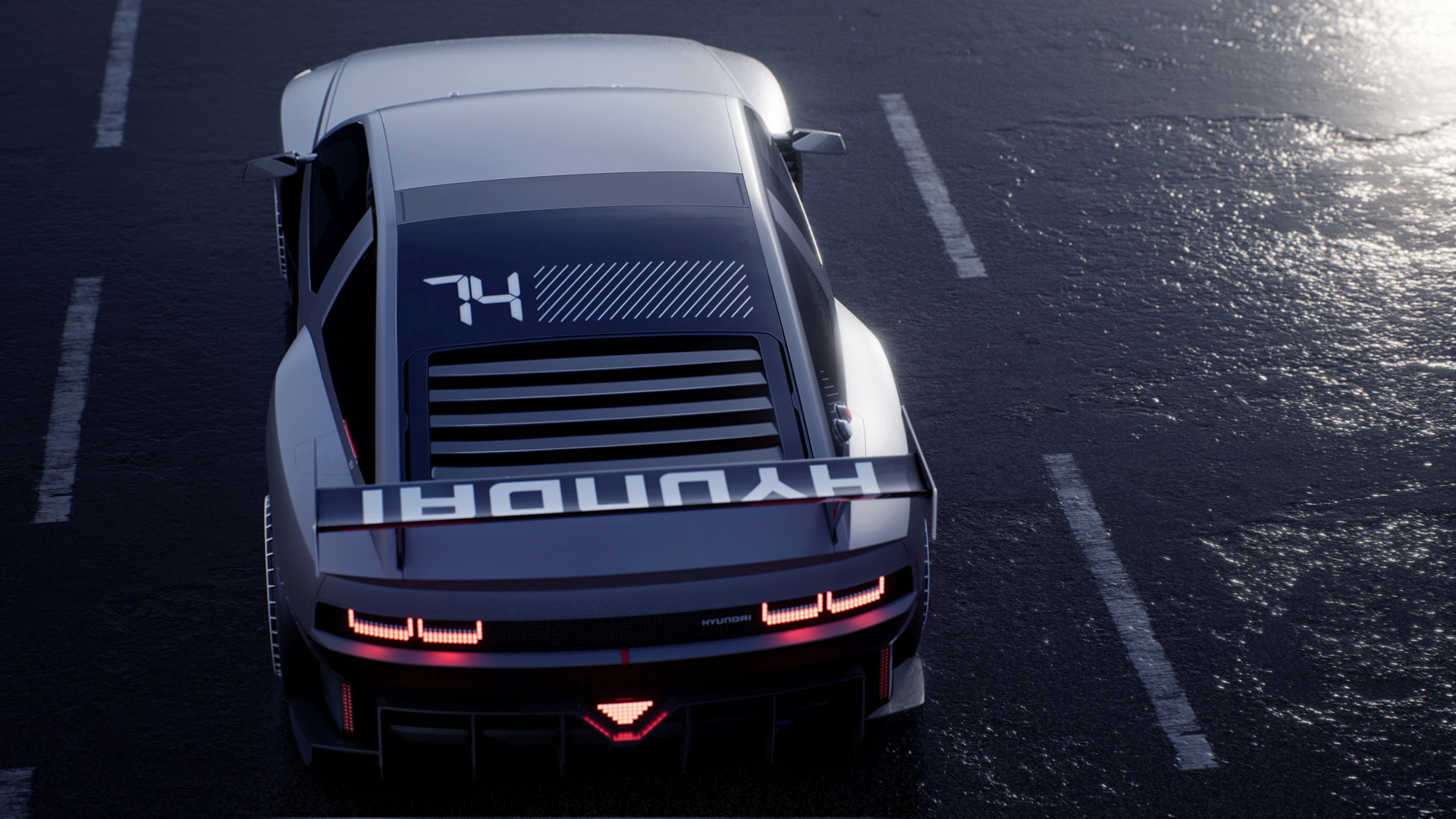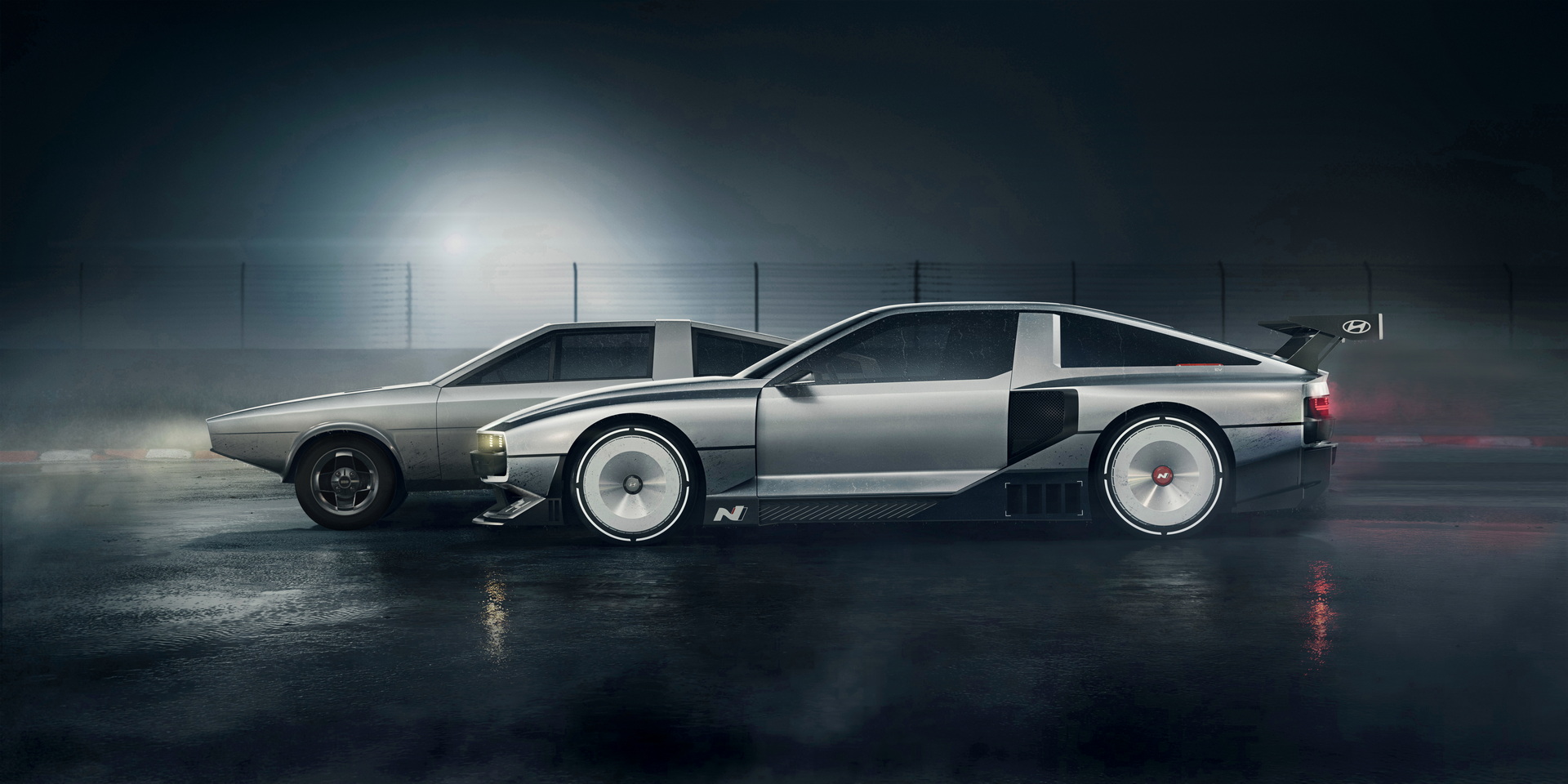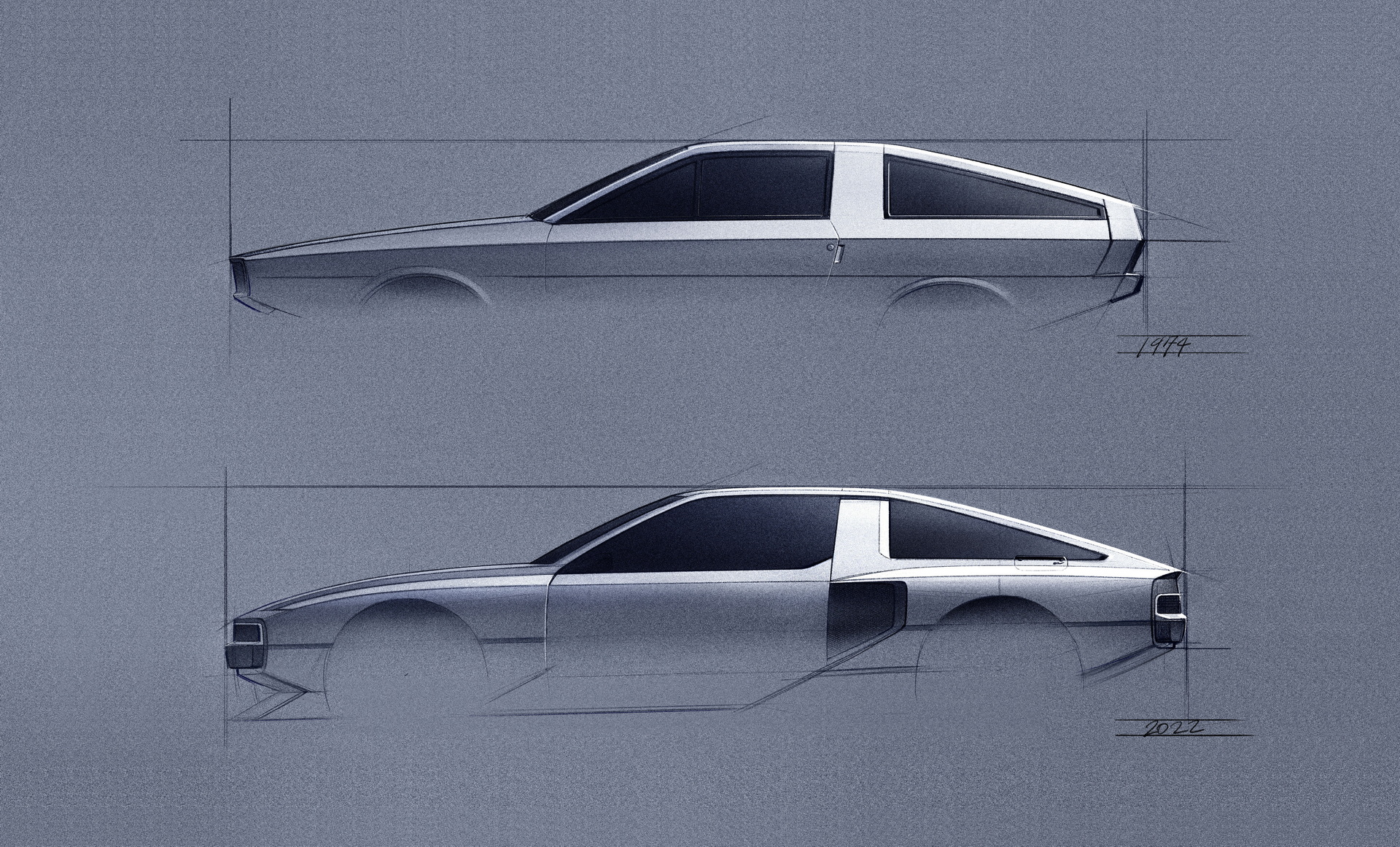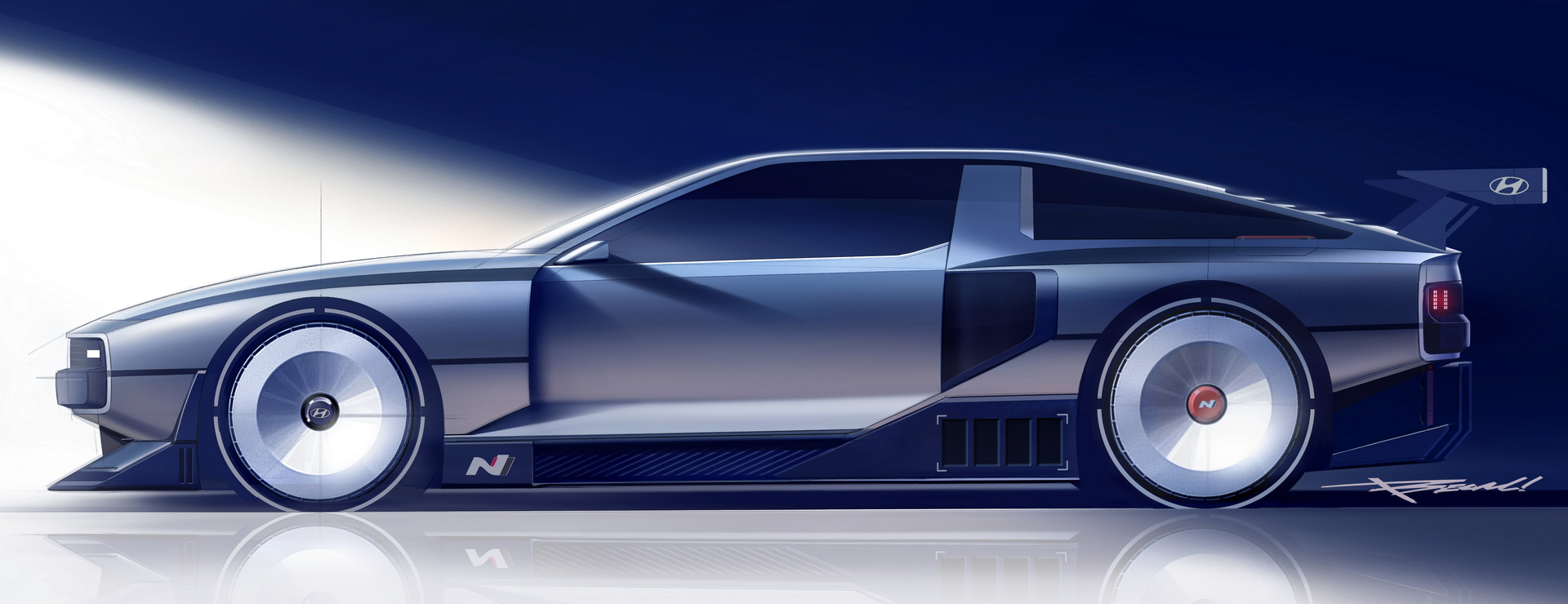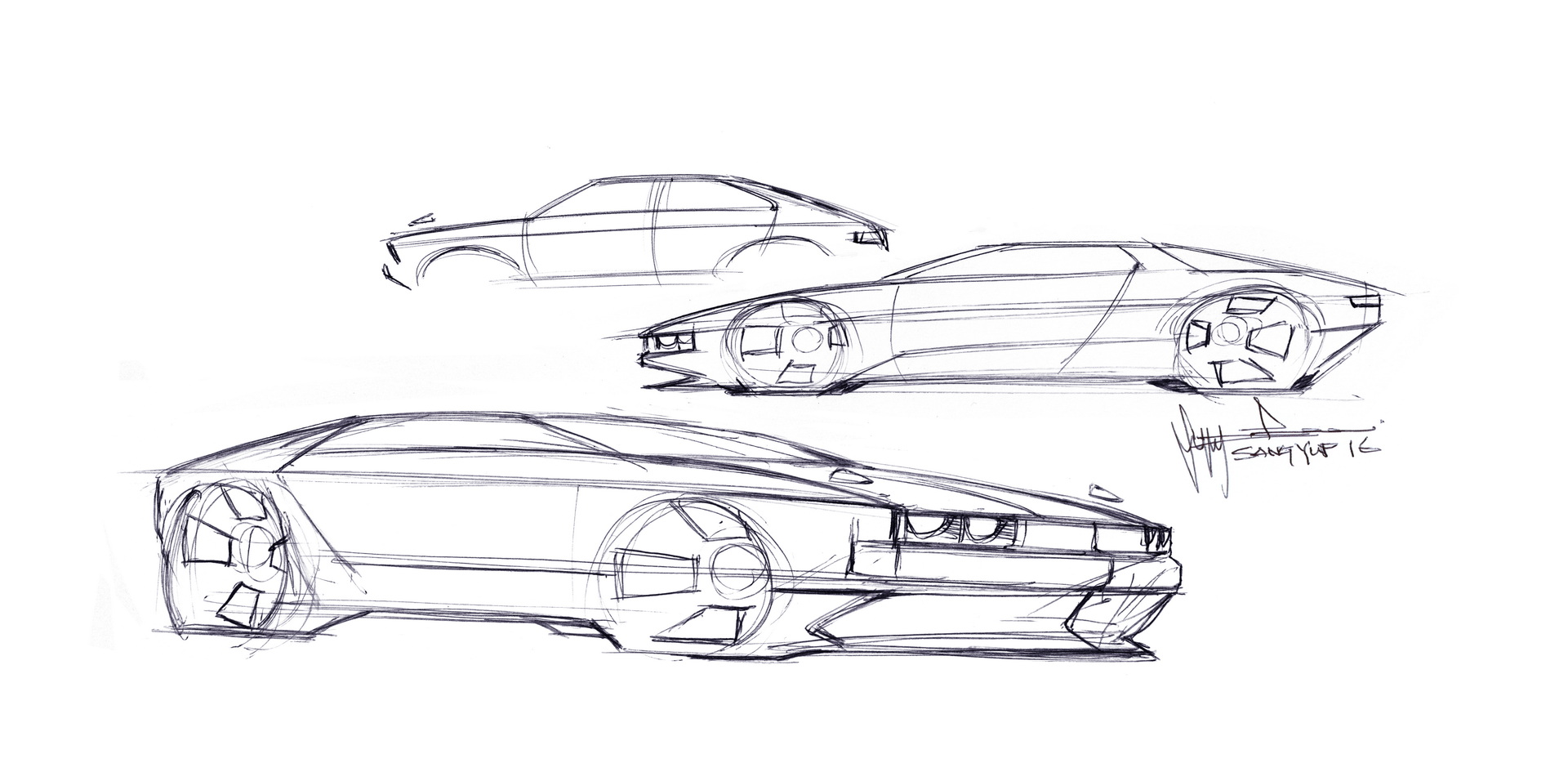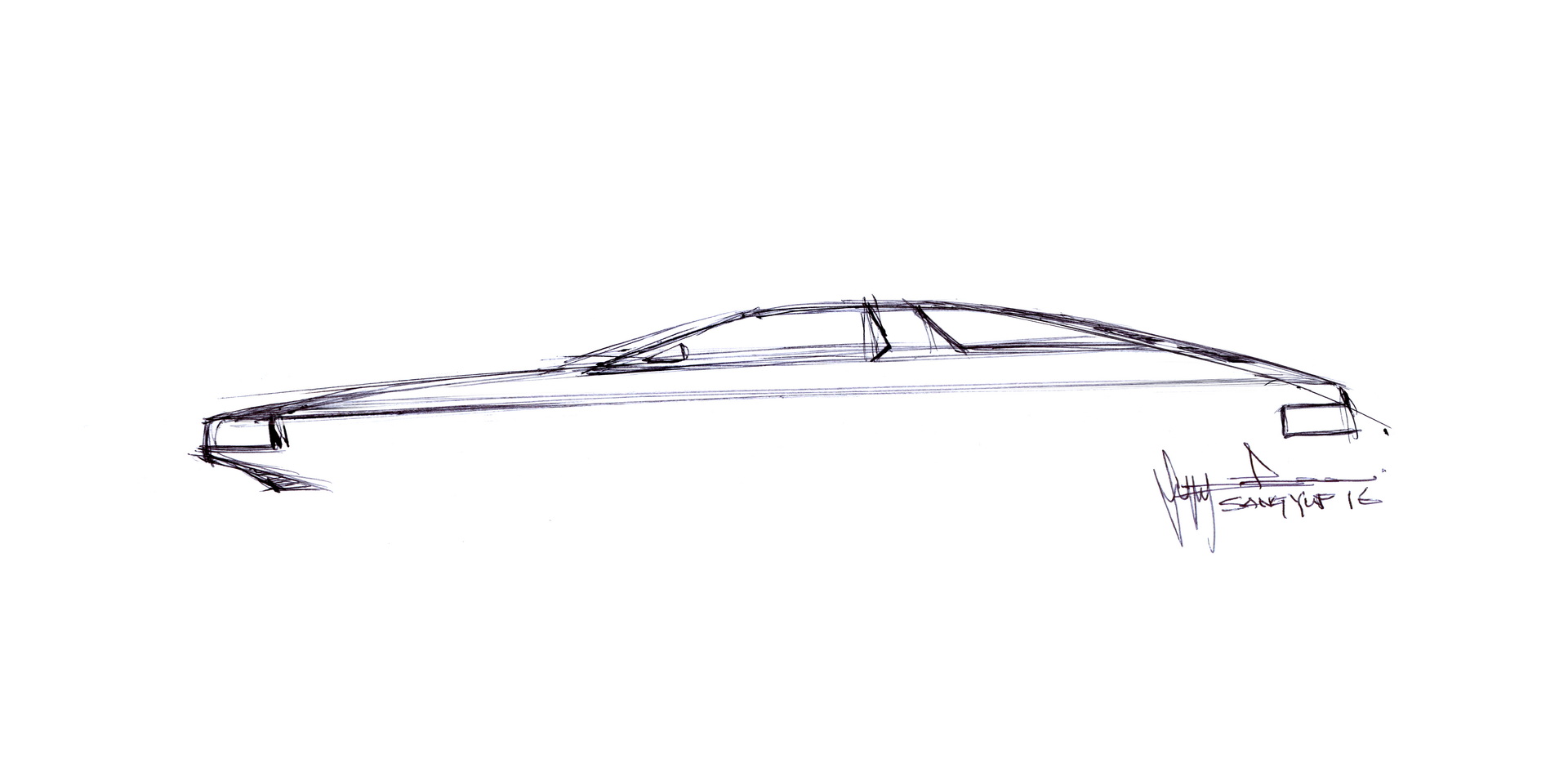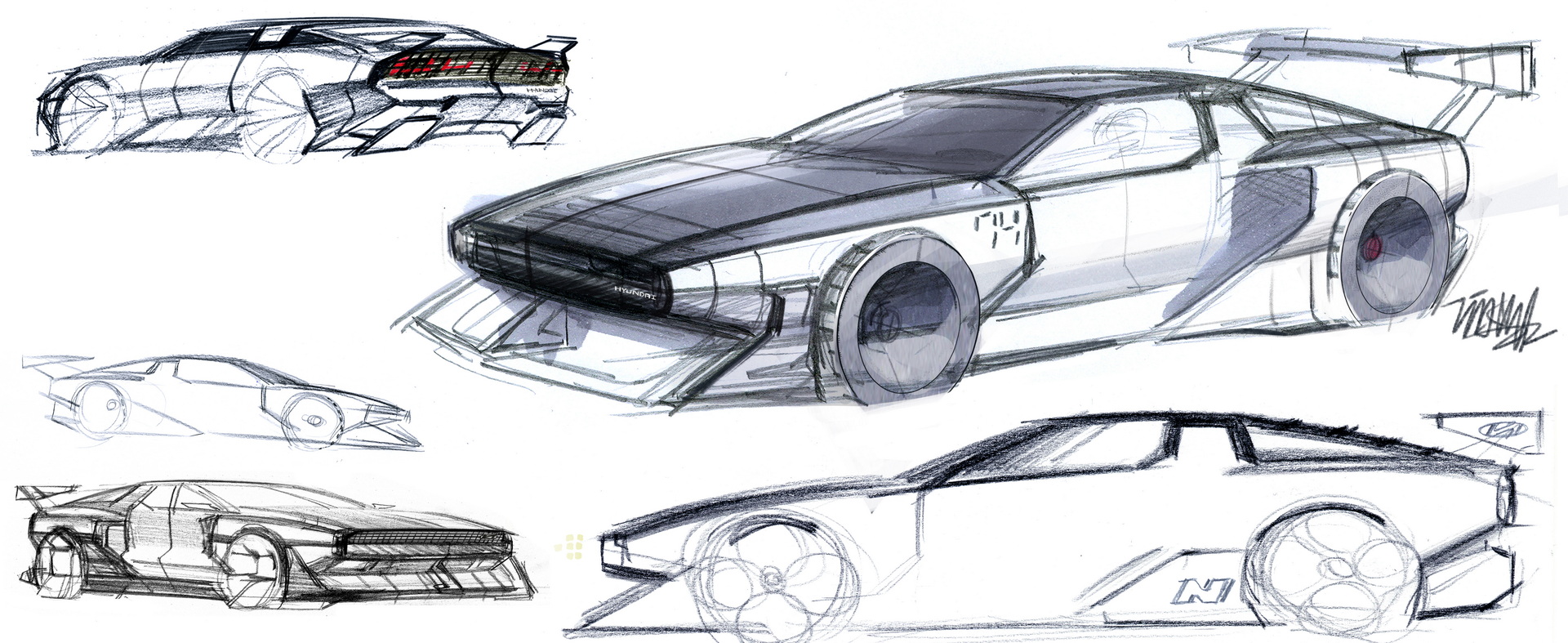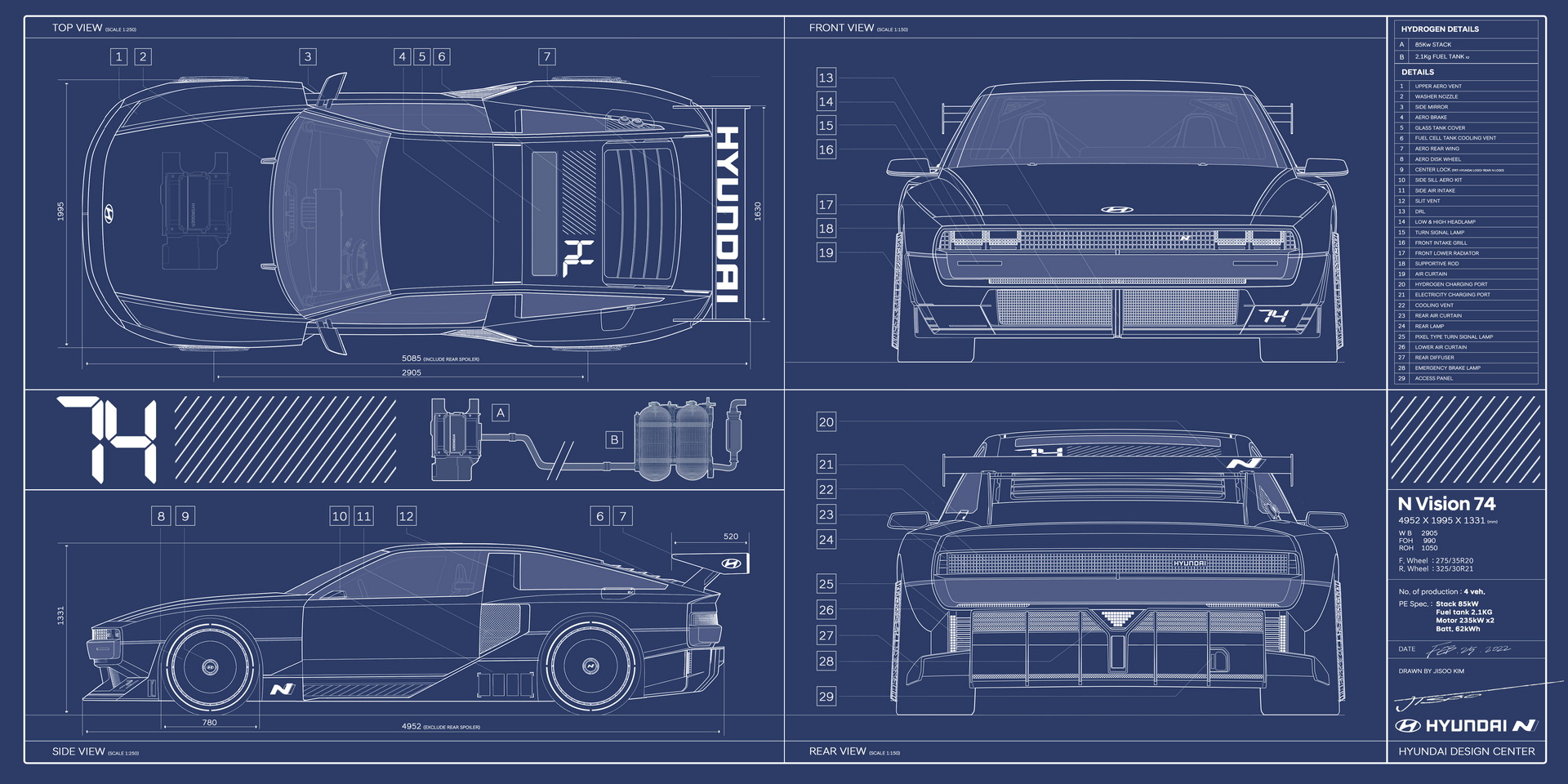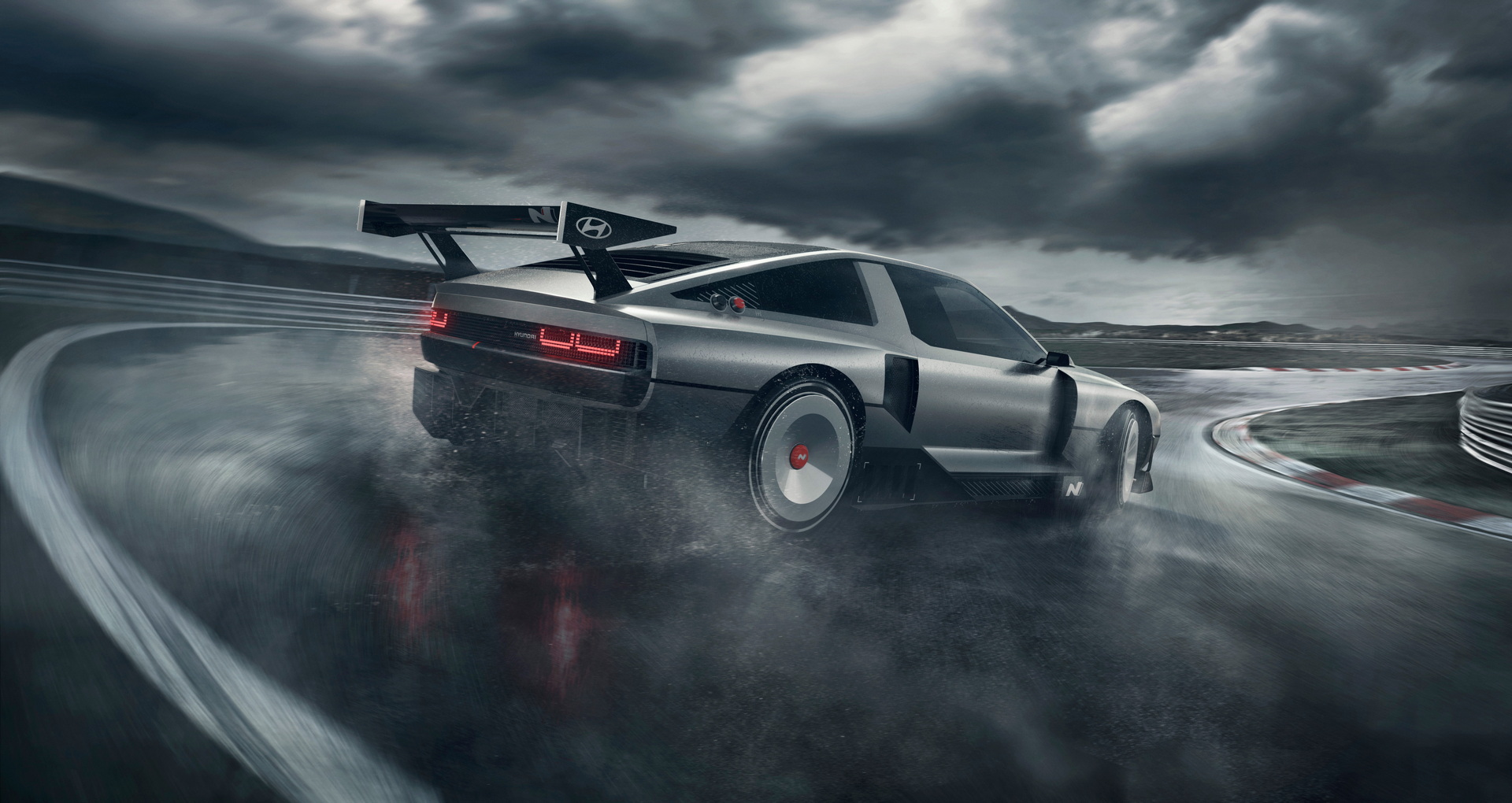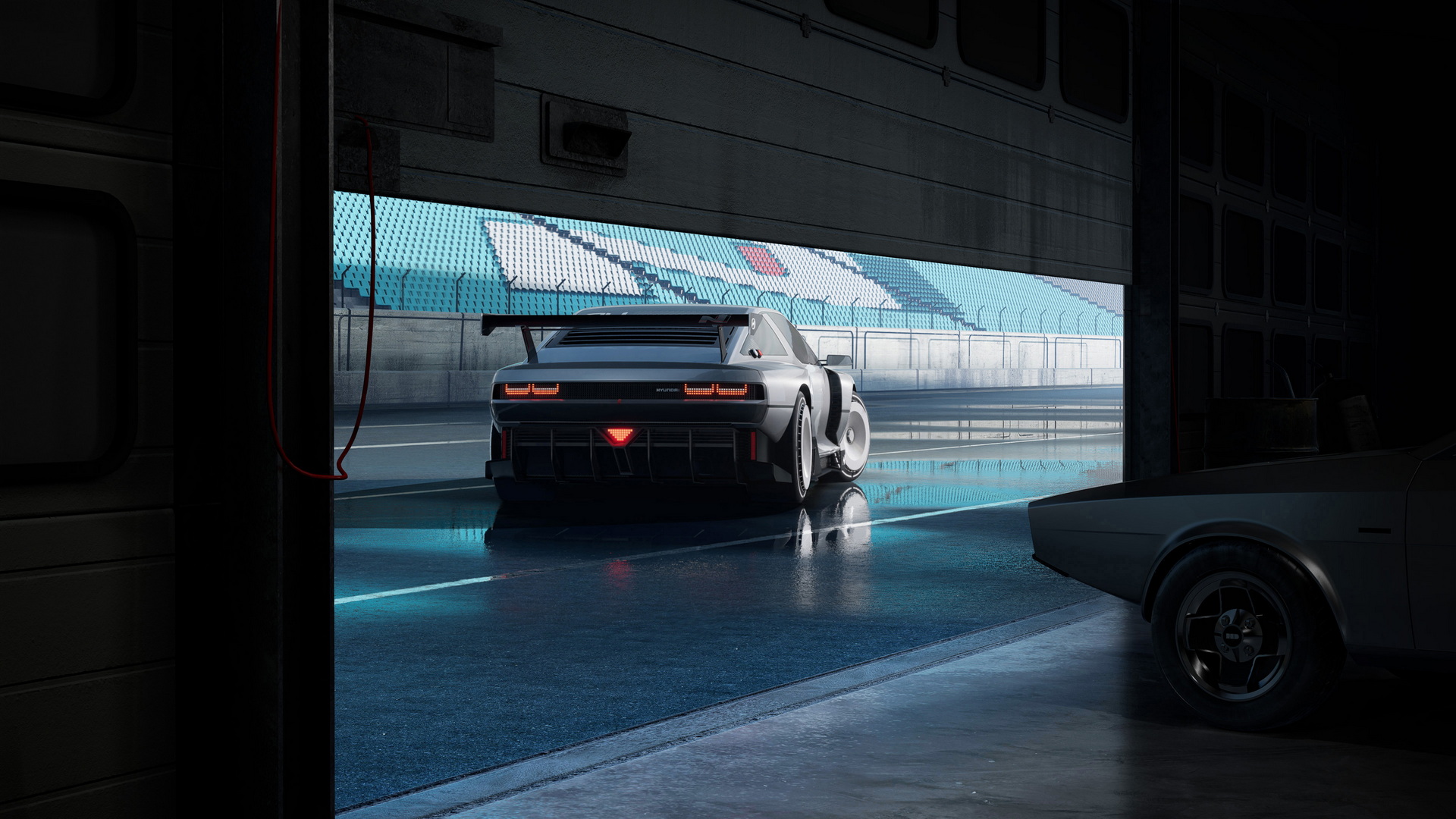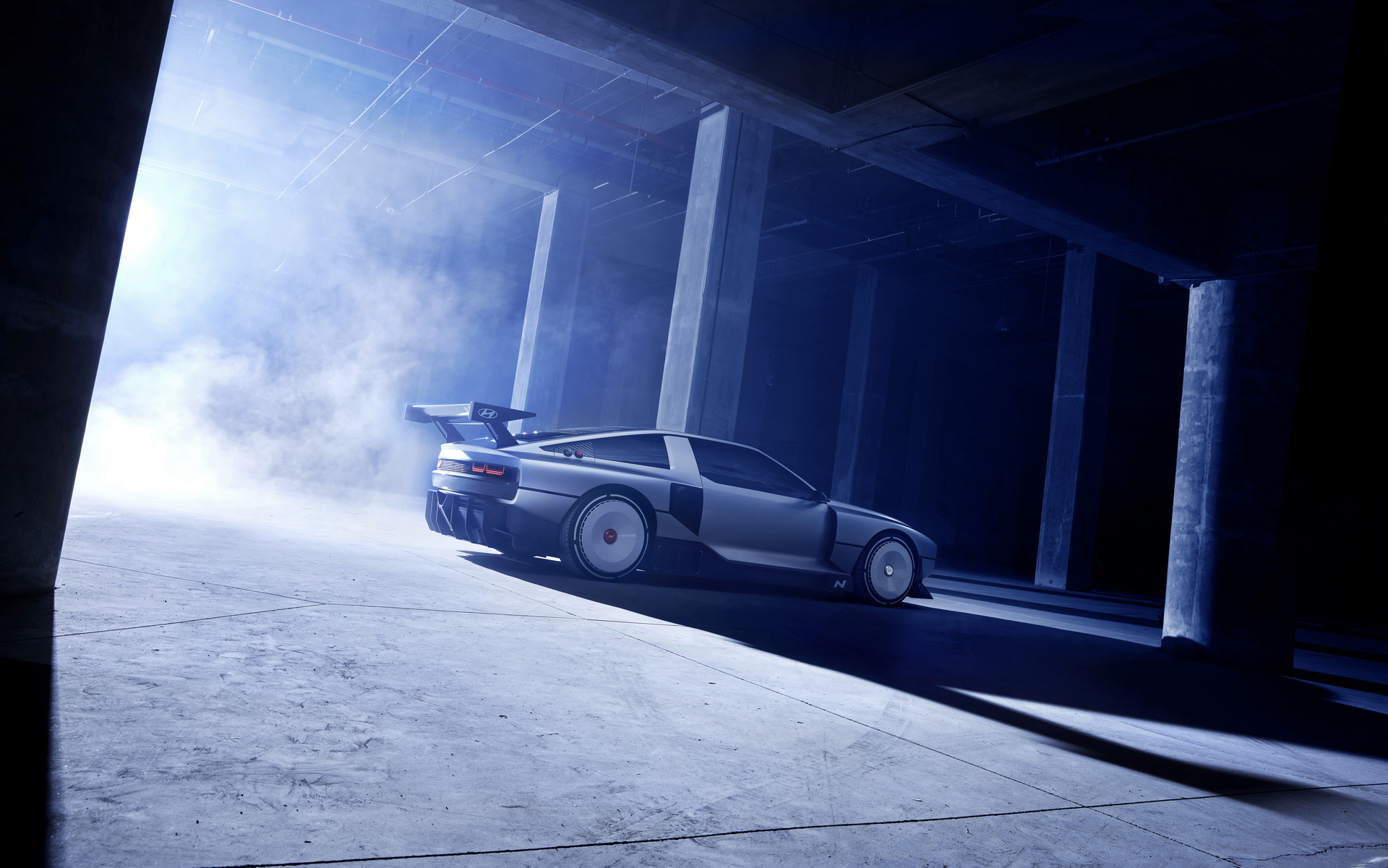The wild and retro-futuristic Hyundai N Vision 74 concept has made its U.S. debut, gracing the automaker’s booth at the LA Auto Show. Its first stop on American soil, the concept car looks as wild live as it did in renderings.
Inspired by the Hyundai Pony Coupe concept, which was designed by Giorgetto Giugiaro for the 1974 season of auto shows, the automaker calls this new concept a vision into the future of electrification for the N performance sub-brand.
The N Vision 74 concept is a fuel cell electric vehicle that uses a hydrogen stack at the front to charge a 62.4 kWh battery pack that is mounted to the bottom of the car to lower its center of gravity. It is connected to independent, rear-mounted motors that can generate a total of 670 hp (500 kW/680 PS) and 664 lb-ft (900 Nm) of torque.
More: Hyundai N Vision 74 Is A Hydrogen Hybrid Sports Concept Inspired By Giugiaro’s Pony Coupe
The motors operate independently of one another in order to distribute power to the side of the car on which it is most needed. The power differential can be set for specific driving duties, such as track driving or, as the renderings suggest, drifting.
The batteries can be charged either by using a conventional EV charging port or with the hydrogen stack. It essentially functions as an 85 kW generator, and its tank (which can contain 9.3 lbs [4.2 kg] of hydrogen) can be refilled in just five minutes. It charges the batteries using the 800v technology from Hyundai’s e-GMP platform.
The Hyundai N Vision 74 concept was first unveiled in July and is part of what the automaker calls its “rolling lab” of technological experiments. The concept is a followup to the hydrogen-powered N 2025 Vision Gran Turismo that was unveiled in 2015.
The automaker says that, through this rolling lab, it has developed new solutions for things like overheating. The N Vision 74, for instance, needs three independent cooling channels for the battery, the fuel cell, and the motor. With them, it can manage heat and energy efficiently to ensure that the car can be hooned for as long as its driver wants to.




